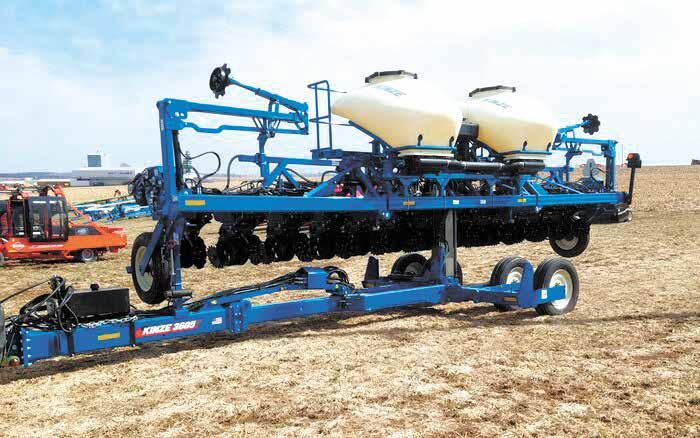WANT TO WIN $100 CASH?

See page 23 of the first section for details!


See page 23 of the first section for details!





Josephine Sutherland found out she was a Princess Kay of the Milky Way nalist while helping move a futon. She had asked a friend to watch the announcement video on her behalf because she did not want to be disappointed. That afternoon, her friend casually texted her that she should check out the video.
“I’m just standing there in shock,” Sutherland said. “I wasn’t expecting it so that I wouldn’t feel so bad at the moment.”

Midwest Dairy’s video announcement of the 10 nalists for the 70th Princess Kay of the Milky Way premiered May 14 on Princess Kay’s Facebook page. Within less than four days, the video had already amassed over 7,000 views.
As a nalist for Princess Kay, Sutherland, representing Pipestone County, is the rst nalist from Pipestone County since 1984.
“My boss has a farm here in Pipestone, and she called me screaming that day,” Sutherland said. “She was just so excited. … I was just in shock for the next day or two.”


Sutherland said her county princess coordinator, dairy farmer and president of the Pipestone County American Dairy Association, Keith Welgraven, was key to her getting the opportunity to compete for Princess Kay.
Welgraven said he had a good feeling Sutherland would do well.
“We’ve always had what I would feel is good representation,” Welgraven said. “It’s just fun to be able to see one you know be there in the top 10.”
Pipestone County princesses have the exibility and opportunity to exercise leadership by planning and coordinating many of their own events. Welgraven’s advice to other
CALEDONIA, Minn. – Rural rst responders from Caledonia were already in the ambulance when they were called to the scene of Rebeckah Marschall’s car crash.
“They told me that I didn’t have another two minutes,” Rebeckah said. “They got to the scene, and they picked my head up and I gasped for air.”
Rebeckah was struck on the driver’s side at around 55 mph in the late afternoon in snowy weather conditions Dec. 16, 2022, on her way to work on her family’s dairy farm.
Within six hours, her injuries required an airlift to a hospital in Madison, Wisconsin. The airlift occurred as soon as a plane could be found as the weather conditions did not allow for helicopter or ground transport.
There, they worked to stabilize
her head and neck which had suffered what the medical team called internal decapitation. Rebeckah said the doctors described her injury as a complete sepa-
ration of the skull base from the cervical spine which required them to do an occipital cervical fusion procedure.
Turn to MARSCHALL | Page 8
 By Jerry Nelson jerry.n@dairystar.com
By Jerry Nelson jerry.n@dairystar.com
PIPESTONE, Minn.
– Dairy farmers battle with high somatic cell counts. But, Evans Dairy has experienced a good deal of success in its war against high SCC.
Jim and Mary Evans and their son, Justin, milk 100 registered Holsteins on their farm near Pipestone. Associated Milk Producers Inc. has given the Evanses an award for

their low SCC every year for the past 15 years. In 2021, their average SCC for the entire year clocked in at a mere 78,000.
The Evanses milk their cows 28 head at a time in a stanchion barn that is well over 100 years old. The barn features timber framing with mortice and tenon joints that are held together with hand-carved wooden pegs. The two rows of stanchions in the barn were originally installed sometime in the 1940s.
The Evanses’ lactating cows are housed in a well-lit, naturally ventilated freestall barn. The free stalls, which are bedded with generous amounts of clean, dry sand, have ample room for mature Holstein cows.
Turn to EVANS
“All dairy, all the time”™
Published by Star Publications LLC
General Manager/Editor
Mark Klaphake - mark.k@dairystar.com
320-352-6303 (ofce)
320-248-3196 (cell)
320-352-0062 (home)
Ad Composition - 320-352-6303
Nancy Powell • nancy.p@dairystar.com
Karen Knoblach • karen.k@star-pub.com
Annika Gunderson • annika@star-pub.com
Editorial Staff
Tiffany Klaphake - Assistant Editor
320-352-6303 • tiffany.k@dairystar.com
Maria Bichler - Assistant Editor
maria.b@dairystar.com • 320-352-6303
Danielle Nauman - Staff Writer
608-487-1101 • danielle.n@dairystar.com
Stacey Smart - Staff Writer
262-442-6666 • stacey.s@dairystar.com
Abby Wiedmeyer - Staff Writer
608-487-4812 • abby.w@dairystar.com
Jan Lefebvre - Staff Writer
320-290-5980 • jan.l@star-pub.com
Amy Kyllo - Staff Writer amy.k@star-pub.com
Consultant
Jerry Jennissen 320-346-2292
Advertising Sales
Main Ofce: 320-352-6303
Fax: 320-352-5647
Deadline is 5 p.m. of the Friday the week before publication
Sales Manager - Joyce Frericks

320-352-6303 • joyce@dairystar.com
Mark Klaphake (Western MN)
320-352-6303 (ofce)
320-248-3196 (cell)
Laura Seljan (National Advertising, SE MN)
507-250-2217 • fax: 507-634-4413 laura.s@dairystar.com
Jerry Nelson (SW MN, NW Iowa, South Dakota)
605-690-6260 • jerry.n@dairystar.com
Mike Schafer (Central, South Central MN)
320-894-7825 • mike.s@dairystar.com
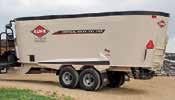

Amanda Hoeer (Eastern Iowa, Southwest Wisconsin)
320-250-2884 • amanda.h@dairystar.com
Megan Stuessel (Western Wisconsin)
608-387-1202 • megan.s@dairystar.com
Kati Kindschuh (Northeast WI and Upper MI)
920-979-5284 • kati.k@dairystar.com
Julia Mullenbach (Southeast MN and Northeast IA)
507-438-7739 • julia.m@star-pub.com
Bob Leukam (Northern MN, East Central MN)
320-260-1248 (cell) bob.l@star-pub.com
House Agriculture Committee Chair Samantha Vang said her goal is to solve the problems of farmers. The inclusion of $10 million for a grain indemnity fund and $4 million for the Dairy Assistance Investment and Relief Initiative are examples of that work. Vang is also proud of the ag committee’s work to support emerging farmers. “When we think about a farmer in America, we often think about a white man who has a tractor and a barn, but that’s not the farmer today,” Vang said. “I come from a strong history of farmers. The Hmong community has always been farmers even before they arrived to the U.S.” Vang said the issues facing emerging farmers include access to land and to capital. The omnibus bill creates an emerging farmers ofce within the Minnesota Department of Agriculture with additional staff to provide support. Dating back to the last election, there is often a perception of a divide between metro and outstate Minnesota. Vang does not share that view. “I haven’t heard of any urban-rural divide; if anything, it is more of a partnership,” Vang said.
Rural, urban interests represented in omnibus ag bill


According to Minnesota Farm Bureau Federation public policy specialist Kaytlin Bemis, the omnibus agriculture nance bill is a good compromise. “The House and Senate versions were pretty different from each other, so there was a lot of negotiations throughout the week, but I feel like both urban ag and rural ag made out pretty well with the agreements they did have,” Bemis said. “Everybody had to take a beating and everybody also got a slice of the pie, so I think they came out with a pretty good agreement.” There was an initial proposal to change the makeup of the Minnesota Board of Animal Health, expanding it from six to 11 members with each congressional district represented. The nal bill took the Board of Animal Health from six to seven members with three producers, three veterinarians and one federally recog-
nized tribal member. “The previous legislation had the governor also appointing the (Minnesota Board of Animal Health) executive director or state veterinarian, which is generally appointed by the board itself, and we had concerns surrounding that,” Bemis said. “I would say on the Board of Animal Health, we fared pretty well.”
DAIRI provision prevails in MN ag omnibus

Minnesota Milk Producers Association Executive Director Lucas Sjostrom said the omnibus agriculture bill was short of their original ask of $10 million for the DAIRI program. However, Sjostrom said he is pleased with the nal bill. “Rebates for the Dairy Margin Coverage Program was our main focus on this bill,” he said. “Considering everything working against us, including a relatively small amount of money compared to the general Minnesota budget in this surplus year, we’re very happy.” This rebate program in Minnesota has shown increased enrollment in the federal program.
By Don WickRural nance authority funding approved
Minnesota Gov. Tim Walz has signed legislation, providing $50 million to the Rural Finance Authority. With this approval, the RFA will continue to nance beginning farmers, livestock expansion and other ag loans.
IA
Burco Sales Independence, IA
Engel Agri-Sales Sac City, IA

DeeImplement of Waukon Waukon, IA
























• Reduces temperatures quickly and uniformly with minimal energy use







• Easy to retro t your current ventilation system
• Made from corrosion resistant materials for long life





• Single phase and 3 phase systems available





Federal order reform proposal submitted to USDA
The National Milk Producers Federation has submitted its proposal to update the Federal Milk Marketing Orders. This proposal goes beyond the changes sought by the International Dairy Foods Association, which is only calling for an update in the make allowances used in pricing milk.
Ending misleading labels
Wisconsin Sen. Tammy Baldwin and Idaho Sen. Jim Risch are leading the charge against plant-based products using dairy labels. The two senators wrote a letter to the Food and Drug Administration, saying, “It’s imperative that the FDA enforce existing standards of identity for dairy in both current and future guidance.”
Farm real estate debt is record high
According to the U.S. Department of Agriculture Economic Research Service, farm sector debt tied to real estate is expected to hit a record high of $375.9 billion in 2023. Farm real estate debt has been increasing since 2009. The average value of farm real estate reached a record $3,800 per acre in 2022, up 12.4% from the previous year.


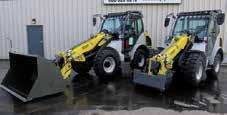


According to the latest USDA supply and demand report, 2023 milk production was estimated to at 228.6 billion pounds. That’s down 100 million pounds from the most recent forecast. The 2023 all-milk price declined 15 cents to $20.50 per hundredweight.


As temperatures begin to rise, dairy cows become at risk for heat stress. Purina Animal Nutrition technical support dairy nutritionist Stuart Rymph said heat stress can begin when temperatures hit 72 degrees. Humidity and sun exposure will only increase the problem. “From the nutrition side, reduced feed intake is the thing that we worry about as much or more than anything else,” Rymph said. “We can get to the point where we have lethargic cows that really don’t want to do a whole lot and that would be the most extreme case.” There should be plenty of water available for the cow herd. In the area of nutrition, Rymph encouraged dairy farmers to feed more highly digestible feeds. “That doesn’t mean feeding less forage,” Rymph said. “In my book, it means feeding better forage.”
The Minnesota Farmers Union hosted a Climate Smart Commodities Working Group, sharing information on projects funded through the USDA’s Partnerships for Climate Smart Commodities Grant Program. “People were asking what others knew about these projects and we thought it would be good to get everyone together,” said Ariel Kagen, MFU Climate and Working Lands program director. “Each of us knows a little bit, but together we know a lot.” Another objective of this working group is to make sure these projects are driving value back to family farmers. The group will meet later in the year as more information is available on projects in the state.
Farmers versus foodies

The keynote speaker at the Animal Agriculture Alliance Stakeholders Summit is the author of the book, “Farmers Versus Foodies.” “There seems to be two prevailing sides of the food system,” Ray Starling said. “The aggies and the consumers, there’s this growing chorus of folks that says the food system is broken and has major problems.” Starling said the agriculture industry needs to be watchful of negative inuences on agriculture practices and policy. “I think the food system is doing great, but I’m concerned outside forces will try to ‘x’ the food system,” Starling said. Starling was the chief of staff for former Agriculture Secretary Sonny Perdue and now serves as the general counsel of the North Carolina Chamber of Commerce and president of the North Carolina Chamber Legal Institute.
Trivia challenge
Pending conrmation, Xochital Torres Small is the incoming deputy secretary of agriculture. That answers our last trivia question. For this week’s trivia, when did June ofcially become dairy month? We will have the answer in our next edition of Dairy Star.
Don Wick is owner/broadcaster for the Red River Farm Network, based in Grand Forks, North Dakota. Wick has been recognized as the National Farm Broadcaster of the Year and served as president of the National Association of Farm Broadcasting. Don and his wife, Kolleen, have two adult sons, Tony and Sam, and ve grandchildren, Aiden, Piper, Adrienne, Aurora and Sterling.
counties that may also have had a few years since a nalist was named from their county is simple.
“Let the dairy princess be herself,” he said. “As long as she’s comfortable doing what she’s doing, it will eventually let her shine.”
Julie (Dock) Fastert, the last Princess Kay nalist from Pipestone County, has advice for Sutherland and all the nalists.
“Go in there with condence,” she said. “You got this far; you got it.”



The diverse representation across Minnesota counties extends past Pipestone County. Gracie Ash, representing Mille Lacs County, was the rst nalist to be named from her county since 2004.
“I’m glad that I can represent a different county that hasn’t been seen in a while just because we are a small but mighty county, and we truly care about the dairy industry,” Ash said.
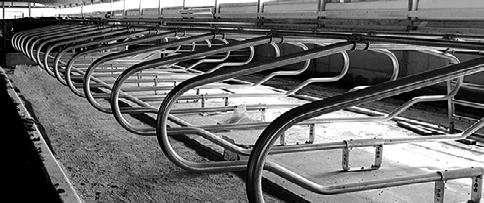
Ash, who is a fan of Disney, knew she was a nalist the moment Princess Kay Rachel Rynda described the next nalist as a Disney princess. The moment was surreal. Ash said her grandma started crying after she found out.
“It feels great,” Ash said. “I never really imagined this for myself, but it’s so fun that I get to bring this back to my county because we kind of are a smaller county, especially within the dairy world.”



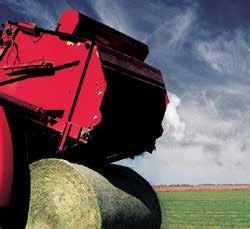
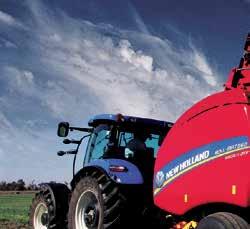
Ash’s dairy princess coordinator, Kristin Reiman, was the last Princess Kay nalist from Mille Lacs County.
“It obviously brings back old memories,” Reiman said. “It is been fantastic to see that our county is being represented again.”
This year, Reiman has been working to rebuild the dairy princess program after the death of a past coordinator, Florence Dehn, who was inuential to their county’s program. Reiman is focusing on making quality appearances and balancing tradition with reaching consumers most effectively.

Princess Kay nalists this year bring broad geographical representation across the state of Minnesota from the far eastern border and Winona County, west to the South Dakota border and Pipestone County and north to Mille Lacs County.
“It is something fun to see that not the typical or not the normal counties being represented,” Reiman said. “It shows that dairy is still throughout the state, and there still is great representation from the lesser-known counties.”
The Princess Kay nalists will undergo leadership training in July before judging occurs in August. Coronation will be Aug. 23, the night before the Minnesota State Fair begins. Coronation is free and open to the public and is held at the state fair bandshell in Falcon Heights, Minnesota.
The nalists for the 70th Princess Kay of the Milky Way title are:













MakenzieAlberts of Pine Island, Minnesota, is the daughter of Eric and Angie Alberts representing Dodge County.
Gracie Ash of Milaca, Minnesota, is the daughter of Mike and Shelly Ash representing Mille Lacs County.
Jalyssa Beaudry of Otsego, Minnesota, is the daughter of Brian and Theresa Beaudry representing Wright County.
Katherine Hills of Monticello, Minnesota is the daughter of Nicole Hills representing Wright County.
Montana Krueger of Arlington, Minnesota, is the daughter of Scott and Stephanie Krueger representing Sibley County.
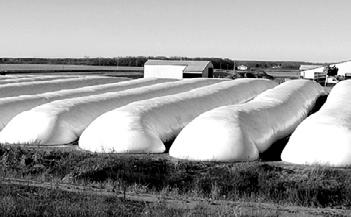

Emma Kuball of Waterville, Minnesota, is the daughter of Nate and Shannon Kuball representing Rice County.

Megan Ratka of Cold Spring, Minnesota, is the daughter of Kevin and Kathy Ratka representing Stearns County.
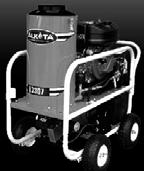
Anne Simpson of Pine Island, Minnesota, is the daughter of Jeff and Cheryl Simpson representing Olmsted County.
Josephine Sutherland of Flandreau, South Dakota, is the daughter of David and Dawn Sutherland representing Pipestone County.

Riley Ward of St. Charles, Minnesota, is the daughter of Randy and Minnie Ward representing Winona County.

Cows and heifers that are close to calving are kept in a nearby loafing shed that has a deep and comfortable bedding pack made of corn stalks.
The low SCC at the Evanses’ dairy farm has not been achieved at the expense of milk production.

“Some of our cows are giving over 140 pounds of milk per day,” Jim said. “We really should be milking our herd three times a day, but we just don’t have the time for it.”
Attention to detail is one of the keys to the Evanses’ SCC success.
“Keeping the free stalls clean is extremely important,” Jim said. “We add fresh sand every few days. Some of our higher producing cows leak milk when their udders get full during the last few hours before milking time. This makes keeping the free stalls clean and dry even more critical. I pay special attention to the rear sections of the free stalls to ensure that the udders remain as clean as possible.”
If a problem arises, the Evanses culture the milk to determine if a cow is ghting mastitis.
“Culturing the milk enables us to use the most effective antibiotic if we feel that we need to treat for mastitis,” Mary said. “If we know that a particular quarter on a cow has a high SCC, we will milk that quarter separately and feed the milk to our bull calves.”
A sound dry cow program is essential to maintaining a low SCC.
“We dry treat all of our cows at dry-off and use Orbeseal to seal the teat ends,” Mary said. “This has
made a big difference in preventing mastitis during their next lactation.”
The Evanses house their dry cows in an open front loang shed. The cows’ feed bunks are on cement slabs, and the shed has a deep bedding pack made of baled corn stalks.
“We make sure that our dry cows are always kept clean, dry and comfortable,” Mary said. “We pay as much attention to the comfort of the dry cows as the lactating animals.”
For the past couple of years, the Evanses have been giving their
Alfalfa Dealer. Brunner Seed, Corn & Soybeans, PWI Seed Corn

•
•
cows Bovikalc boluses at dry-off.
“Bovikalc helps the udder adjust to being dry and makes it easier for the udder to come back into lactation,” Mary said. “Anything that reduces stress is a good thing.”
The battle against SCC commences as soon as a heifer calf is born. The Evanses ensure newborn calves receive two feedings of highquality colostrum.
“Their rst meal is Lifeline powdered colostrum,” Mary said. “I can mix the powder any time of the day or night without the hassle of warming up stored colostrum. After their rst feeding, the calves get everything that their mother produces. We never feed mastitis milk to our heifer calves. We want to prevent any possibility of exposing them to mastitis bacteria.”
Calves are kept in huts that always have plenty of clean, dry bedding.
“We want to get the calves accustomed to lying on clean bedding,” Mary said.
Overpopulating the freestall barn is something that never happens at Evans Dairy.
than their cows’ environment.
“When we pick out sires, we look for bulls who have daughters that have superior udders,” Mary said. “A sound udder is a healthy udder. We have also been using some polled genetics and have been getting about a dozen polled calves per year. Dehorning is stressful for the animal at any age. Anything we can do to reduce stress for our animals is good for the herd and helps lower our SCC.”
The benets of maintaining a low SCC can be seen with each milk check.
“AMPI pays us a premium for quality milk,” Jim said. “A major factor in high quality milk is a low SCC.”
Mary agreed.
“Healthy cows are happy cows,” she said. “Healthy cows also last longer in the herd, which helps reduce our need for replacement animals. But most importantly, happy cows give more milk.”
•
•
•
•
•
• Lawn Grasses
• Huge Selection of Bulk Garden Seeds
• Deer Plot Seeds

•
“If you have too many animals for the number of free stalls, the heifers won’t have any place to lie,” Mary said. “We train our fresh heifers to lie in the free stalls. This sometimes means putting a halter on them and tying them in a free stall until they lie down.”
The Evanses’ battle against a high SCC reaches much deeper
•
• Seed Oats
• Barley
• Spring & Winter Wheat
In 2021, Jim and Mary Evans’ herd had an average soma c cell count of 78,000 for the year. Associated Milk Producers Inc. and the Minnesota Department of Agriculture have recognized the Evanses for their consistently low SCC.













The neurosurgeon had never seen or performed the type of surgery Rebeckah needed and had to rely on studying two medical journal articles about the surgery during her transfer. The family was informed of this immediately after surgery by the neurosurgeon, and Rebeckah was told personally at a follow up appointment.
“They (the surgical team) had … a little over an hour to gure out a plan and were just going in there kind of blind,” she said.
Rebeckah said most people with her injuries die at the scene or soon thereafter.
Rebeckah’s husband of 42 days, Andrew, was on his way home from work when he received the news from Rebeckah’s mother, Sheila Schroeder.


“She asked me to pull over, and I immediately knew something was up,” Andrew said.
The next few days were lled with unknowns as the doctors were unsure how Rebeckah would respond.
“The … neurosurgeon made it very clear that … if and how she recovers is completely dependent on the next 48 to 72 hours,” Andrew said.




Besides injuries to her neck and her severe skull fracture, Rebeckah also had a small laceration in her carotid artery and spleen, a broken rib, broken pelvic bones and facial bones, two lumbar fractures, a partially collapsed lung and initial paralysis on her left side.

Rebeckah does not remember the rst ve days after the accident well as she was on and off sedation. As she gradually came into consciousness, it was a confusing experience.
“It was just hard to wrap your head around,” Rebeckah said. “Waking up with a bunch of tubes in your throat, not knowing where you are, thinking it’s a dream.”
Rebeckah’s father, Daniel Schroeder, said one of the rst things she asked was whether they had called the milk tester because they had originally been scheduled to test the day after her accident.
Turn to MARSCHALL | Page 9







Rebeckah was unable to communicate verbally for two weeks after the accident and had to communicate via a whiteboard and hand signals.
Andrew said he was worried about her left side paralysis.
“We all know what kind of person Rebeckah is; we know that she’s a go getter,” Andrew said. “She needs to be able to do things herself. So, it was really hard for us to see that her left side was not responding.”
The couple spent their rst Christmas in an intensive care unit. A row of icy windows, a table top Christmas tree and a stuffed cow completed the scene. By then, Rebeckah was beginning to recover.
She put in voracious effort to recover quickly in spite of a setback in early January when her spleen ruptured.
“I like to farm so it’s just trying to get back to the farm as soon as I can,” she said.
Dairy played a part in Rebeckah’s hospital stay. One of the nurses would sneak her ice cream once she was starting to eat by herself again. Because of being intubated and a tracheostomy, she was unable to eat food for three weeks or drink thin liquids for ve weeks.
“I cried the rst time I drank milk because it was so good,” Rebeckah said.
Rebeckah returned home Jan. 19, and the rst thing she did was visit the cows. A mere 80 days after the accident, she was cleared to dairy farm again with restrictions.
Rebeckah is the fth generation on her family’s dairy farm. She farms alongside her dad, uncle and cousin on their 1,500 acres.
While she was in the hospital, the farm sold nearly half of its cows going from about 190 cows to 110. Rebeckah said the lower cow numbers have been a blessing that came out of her accident,



taking pressure off of all the members of the operation. The family said they are thankful for past employees and family members who made time in their schedules to help get the work done during this time.
On Feb. 18, the Marschalls hosted a thank you event for the rst responders and the rest of their supportive community. Daniel said the event allowed Rebeckah to break the ice with community members who were afraid to talk with her after the accident.
Rebeckah agreed.
“They looked at me like I was a ghost,” she said. “They didn’t know if it was their place to really ask how I was doing.”
The event was well attended, and Rebeckah stood in the receiving line for three hours.
Though she has already made signicant progress, she wants to continue to see improvement in her healing.
“My hope is to get back to 100%,” she said. “We’re a long, long ways from that. I mean, everything (is) still kind of like in shambles.”
Now that she has returned home and is farming again, Rebeckah is able to help with milking and feeding calves and does a little bit of scraping. She is unable to drive the tractor, grind feed or bed the cows because the surgery which stabilized her neck added in plates and screws which took away the full range of motion making it difcult to look behind her to operate machinery.
She said she hopes to regain neck mobility through a potential surgery to remove the hardware once she has healed more. Over time, she also hopes to increase her balance and strength so she can return to all her daily tasks.
To follow Rebeckah’s journey, visit: www.caringbridge.org/visit/rebeckah121622.





White Corrugated PVC liner panels
40” wide x 16’4” long $1950


White smooth PVC sheeting
4’ x 8’ x 1/2” thick $5750

ATTENTION FARMERS...
Are rocks, re-rod or holes showing in your bunker silo?
WE CAN RESTORE YOUR BUNKER TO LIKE NEW CONDITION!
BUNKER SILO RESTORATION/ REPAIR WITH JETCRETE

Approximately 1” of steel reinforced material added to bunker walls.
• High pressure water blasting of walls for excellent bonding.

• 6 gage heavy duty wire mesh installed
• Jetcrete -phnuematically applied concrete. GUARENTEED

SILO RELINING WITH “JETCRETE”
BARN WALL & BASEMENT RESTORATION WITH “JETCRETE” (Limestone, rock, block & concrete wall)
SERVING IA, MN, WI, IL AND SD
CONTACT: 800-866-7327
PTO


WASECA, Minn. – An energy of happiness and excitement mixes in the air with woodsmoke, pizza, garlic and folk Americana music on a Sunday afternoon at Pleasant Grove Pizza Farm.
Out in the grassy yard, guests relax with a beer or wine they brought with themselves, or a favorite snack, as they wait in anticipation of a woodred pizza made on-site.
A customer bites into the featured pizza of the week, Peary Spring. Instantly, taste buds are met with the sweet avors of pear blending with the richness of caramelized onions, a tart note of Gorgonzola cheese, smokey bacon and the fresh spring avor of dill.
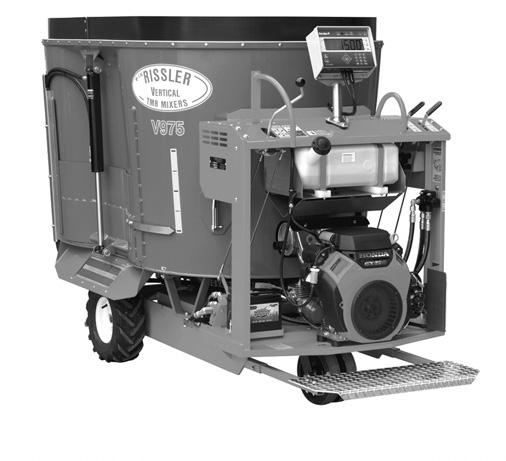
On the perimeter, children play games, making instant new friends with kids who were strangers just hours ago, and a football ies through the air among friends.
Established in 2015, Pleasant Grove Pizza Farm is owned by husband and wife Bill Bartz and Emily Knudsen. Their business is open May through October on-site, and their winter menu pizzas are available for takeout and delivery at Half Pint Brewing Company during the offseason.

Approaching the site in rural Waseca County, the entry road to Pleasant Grove Pizza Farm looks like just another gravel driveway, but what happens at the end of that driveway is special. There, families and friends connect, and somehow the busier it gets, the better the energy.
• 5 sizes from 45 to 100 cu. ft.
• Stainless steel mixing chamber


• Stainless steel auger ight


• 14” carbide tipped hay knives
“You don’t spend an hour here; you spend an afternoon here,” Knudsen said.
She said agritourism is important to her because it is a new way to use their land.
“My goal is to teach kids and adults alike that there’s just more to do on a property than traditional farming,” she said.

Their pizza farm focuses on high-quality ingredients, locally sourced when possible. Some ingredients come from their own gardens where they raise herbs, vegetables and owers. They
also do collaborations with local farms to highlight an ingredient from an area farm on the pizza special of the week.
“When I create a pizza, I kind of pick one main ingredient and then build the avor proles from that,” Knudsen said.
She crafted the menu herself with tasting input from employees, family and friends. Her creations focus on synergistic blendings of ingredients.
“I love to build pizzas off of avor combinations because it leaves everybody excited for the next bite,” Knudsen said. “Food just tastes better when it’s paired … with other foods that intensify the avors.”
A pizza special must be totally perfected before it is served. An hour before they open, staff will share the special of the week together. If everyone cannot agree that it is ready, it will not be served.
“If one of us is like, ‘Oh no, there’s something off,’ we are changing that,” Knudsen said. “We are coming up (with changes) within minutes.”

The farm has also been known to collaborate with chefs from the Twin Cities to create the special of the week.
Customers bring their own chairs, plates, utensils, drinks and any other food they want to go with the pizza. Many also bring games. Guests are asked to pick up after themselves and leave their dogs at home.
While event-goers are most often focused on food for themselves, some bring snacks for the kids to feed to the two pet goats on the farm. The llama and alpaca who also live there forego snacks as they like to keep to themselves.
During the busiest part of the summer, the farm will make 200 pizzas in a night and use 500 pounds of cheese in a week.
Having a pizza farm has been a dream for Knudsen ever since she visited her rst one at 21 years old.
“It was just a concept that blew my mind,” Knudsen said. “I just remember thinking in my head, ‘I would love to own one of these one day.’ So, every time I went to that pizza farm, I couldn’t shake it.”
Fast forward eight years, and Knudsen began dating her now husband who owned a 50acre property with a horse stable on it. When she suggested they start a pizza farm, he was initially
Free brochure! 1-800-436-5623
unimpressed by the idea, but after a date to a pizza farm together in eastern Wisconsin, Bartz was interested too.
“Part of me got a little worried because I was like, ‘Oh my gosh, I just gave my dream to some guy I’m dating,’” Knudsen said.








Two years later in August 2015, their pizza farm opened.

“Everything just naturally owed,” Knudsen said. “We were very excited and very inspired to do this, and it just really felt right for both of us.”
Their business has grown over the years. In 2020, Knudsen quit her job and started working at their pizza farm full time. Knudsen said that year they saw a lot of growth,
as people were gravitating toward outdoor experiences.
Also in 2020, they were featured in the New York Times food section in June and were part of an episode of a show on the Magnolia Network in the fall. Knudsen said they had a couple y from Florida to visit their farm after seeing the episode.
Knudsen enjoys her guests, whether they have own from Florida; driven from the Twin Cities suburbs, Mankato, Rochester or Owatonna; or stopped during a camping trip.
“I love being able to come out and talk to our customers,” Knudsen said. “I love watching families and friends hanging out … and I love watching kids play.”
We are grateful to dairy farmer Directors who share their time, their ideas, and their common sense to help keep DHIA services relevant. From time to time we will use this space to recognize these leaders and to say thank you. This time we will feature Peter Seitzer. Peter has been a DHIA director for 13 years.

What are some of your duties as director?
Peter Seitzer

 Saint Peter, MN DHIA Director for 13 years
Saint Peter, MN DHIA Director for 13 years
My duties include attending state and national meetings, along with helping nd new tests from the milk sample to improve the ef ciency of the dairy farmer. I also want to keep DHIA moving forward for long into the future.
What do you like about this role? I like being involved in helping to keep the dairy industry strong, and I like to help give dairy farmers new tools to help them in managing their farms, so they can be as productive as possible.
Why is DHIA important to you? DHIA is important to me because it helps me make good production and management decisions for my own herd.
Tell us about your farm. I am the fourth generation on the farm, which is located in Saint Peter, MN. We milk 65 registered Holsteins. We also farm 630 acres of corn, soybeans and alfalfa.












“I like to help give dairy farmers new tools to help them in managing their farms.”
 By Tiffany Klaphake tiffany.k@dairystar.com
By Tiffany Klaphake tiffany.k@dairystar.com
PIERZ, Minn. – The students of Holy Trinity Catholic School raced to see the calves at Happke Holsteins near Pierz.
A total of 35 students, the second- and third-grade classes, were on a mission to learn where their food comes from May 17 when they stepped foot on Kent and Stacy Happke’s dairy farm.
Holy Trinity Catholic School was awarded one of the farm-to-school grants through the Minnesota Department of Agriculture that aim to help schools incorporate more locally sourced foods into their nutrition programs. The eld trip to the Happke farm, although not paid for by the grant, was meant to introduce students to the idea of eating locally.
The eld trip started with a local greenhouse to learn how food is grown. Then, the students experienced a hands-on tour that Stacy Happke spent months creating herself.
“If they learned one thing
today, I’d be happy,” Happke said. “I was surprised at some of their questions; they had really good ones. If the kids learn early on where their food comes from and that dairy foods are safe, healthy and nutritious, then they will be lifelong consumers of our product,” Happke said.
The Happkes milk 100 cows in a double-6 herringbone parlor and farm 350 acres of corn and alfalfa.
This is not the rst time a bus load of students meandered the freestall barn at Happke Holsteins. Five years ago, another group of elementary students visited.
“My daughter is in second grade, and we wanted to do a tour for her class,” Happke said. “We did a tour for the second and third graders of Holy Trinity when our oldest two kids were in those grades as well.”
During the farm tour, the students saw farm equipment and Happke talked about farm safety.
Then, Happke led the eager group of youngsters to the calves where she talked about
calf care. She showed some of the objects farmers use such as calf blankets, bottles and a calf warmer.
From there, the group went to the freestall barn, where Happke had feedstuffs
on display. She again talked about several tools farmers use to feed and take care of their cows.
Inside the parlor, a cow greeted everyone as they led in. Happke demonstrated how
to milk a cow and let all the students feel the suction of the milker before she put it on the cow.
The last leg of the tour was in the milkhouse, where Happke talked about the protocols farmers use to ensure the quality of their product.
“I tried to pick out fun things, something that most kids have never seen before like our calf warmer, the calf blanket, a cow brush, the slowmoving sign,” Happke said.
To end the fun-lled tour, all of the students received an ice cream treat donated by First District Association.
The idea started last fall when the class was talking about local careers during a school lesson. Happke brought up the idea to her daughter’s teacher about bringing the class to the farm.
Happke said everybody was on board with doing the farm tour. Over the winter, Happke planned how she wanted the tour to go. Because there would be cost involved, she applied for her own grant for her part of the eld trip through Midwest Dairy.

Stacy Happke lets students feel the pulsa on of a milking unit May 17 near Pierz, Minnesota. Happke gave a farm tour to 35 elementary students.

“I got a grant from Midwest Dairy so that each kid and adult could go home with a goodie bag that included a book I made,” Happke said.
For two months leading up to the event, Happke worked on making a photobook of her farm to share with the students. She took the photos and used the Midwest Dairy website for facts she put on each page.

“I wanted to send the kids home with something they learned, and I wanted it to go beyond them,” Happke said. “I want them to share it with their parents and their grandparents.”
The book includes information about the Happke family, calf care, feeding, bedding, milking, food safety, farm safety and other people in the community who help dairy farmers –veterinarians, milk truck drivers, agronomists and bankers.







Happke also lled two jars with candy. One jar was full and represented the total number of people in the U.S. The other only had a few pieces of candy, which represented the number of farmers in the U.S. She took a picture of the jars and put it in the book.
At the end of the book, Happke included nutritional information about common dairy products as well as two recipes.


“I never came across a book that was based on dairy (farming), one that would t what I was trying to do,” Happke said. “This way, it is also about someone in their community that they and their families know.”
Though the Happkes are not sure if more school tours are in their future, they said they are glad they did this one.
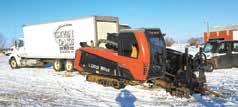
“It went well,” Happke said. “I was happy with the outcome.”


























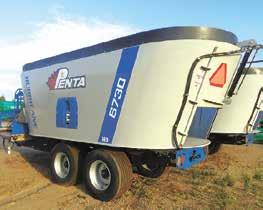







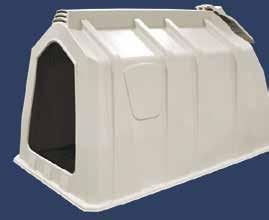









 Devin Zellmann
Parents: David and Denise Zellmann
Devin Zellmann
Parents: David and Denise Zellmann
Tell us your greatest high school accomplishment. My greatest high school accomplishment would probably be when I took part in the FFA ag mechanics contest the past two years. I placed seventh and fourth individually in the regional event, earning a trip to the state contest where I placed in the top 20% while also being my FFA chapter’s president. This contest included many things that can be found on a farm including welding, framing, masonry, soldering, wiring circuits, plumbing, small gas engine work and reading blueprints.
What do you plan to do after high school? After high school, I plan on attending South Dakota State University to major in mechanical engineering and minor in mathematics.
What are some benets of being raised on a farm? Being raised on a farm has plenty of benets. The biggest thing you learn is a good work ethic. This begins at a very young age and continues to build. There is always something to do on a dairy farm. This teaches you to be responsible, whether it's getting up on time to milk every morning or making sure all your chores are done. Being raised on a farm also teaches you to be caring and compassionate with animals while also teaching the cycle of life and how to deal with a loss.
How has farm life prepared you for what’s next? Farm life has prepared me for my future by teaching me how to work hard. Working on a dairy farm can prepare you for a wide variety of challenges as a new problem can arise on the farm every day. Whether it is a midnight calving or a broken planter, you never know what you are going to need to solve next.
Where do you see yourself in ve years? In ve years, I plan to have graduated from college and be working full time in the engineering eld. I also plan on taking over the family farm.
Tell us about your farm. We are milking 54 cows in our 50-cow tiestall barn and farm about 800 acres of land. My grandpa, dad, uncle, mom and brother all take part in our farming operation. I have a big part of this as I do most of the planting in the spring, most of the baling in the summer, and I help haul wagons in the fall. Our milk is hauled to Bongards. My brother and I also run an Instagram page called @eaglelakedairy where we post about what it's like to live on a dairy farm.
Tell us your greatest high school accomplishment. My greatest high school accomplishment was getting my FFA state degree, the highest award in Minnesota FFA, as a junior because most FFA members do not get this award until their senior year.
What do you plan to do after high school? After high school, I plan to attend Ridgewater College to double major in ag business and farm operation and management.

What are some benets of being raised on a farm? Being raised on a farm has helped me learn the true meaning of hard work and has helped me to gain a strong work ethic as well as to gain an understanding of where my food truly comes from, not just the grocery store, from a young age and all of the hard work that goes into it.
How has farm life prepared you for what's next? Farm life has prepared me for the future by helping me gain time management skills, a strong work ethic, independence and communication skills as well as helping me realize my passion for agriculture.

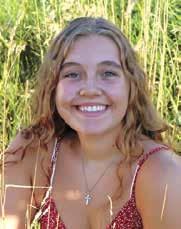
Where do you see yourself in ve years? In ve years, I hope to either be back at home on the farm or working for some other local agricultural business.
Tell us about your farm. My family's farm, Rohe Dairy LLC, is run by my two uncles, dad, two cousins, aunt, myself and a few other employees. We milk about 240 cows with four Lely robotic milking systems. We also have a calf barn with a Lely calf feeder as well, and our milk is shipped to Land O’Lakes in Melrose, Minnesota.

Jake Hoeer

Parents: Brian and Eileen Hoeer New Vienna, Iowa Beckman Catholic High School
Tell us your greatest high school accomplishment. My greatest high school accomplishment is restoring my grandpa’s 1935 Farmall F-20 at the county fair through my local 4-H club.
What do you plan to do after high school? After high school, I will be attending Hawkeye Community College in the fall to study diesel technology along with helping on the family farm.

What are some benets of being raised on a farm? Being raised on a farm comes with lots of benets many people do not think about. For example, being raised on a farm has taught me to not cut corners and do the job right. Another thing I nd to be a benet of living on a farm is being close with nature and animals almost every day.
How has farm life prepared you for what’s next? Farm life has taught me the skill of having a good work ethic and giving it your best. These skills learned on the farm can take me far into my future endeavors.
Where do you see yourself in ve years? In the next ve years, I see myself working at the local implement dealer I currently work part time at along with helping on my family's farm.
Tell us about your farm. On my family's farm, we milk 170 Holstein cows with three Lely robotic milking systems along with raising 600 acres of corn and alfalfa. On our farm, my entire family is involved including my parents, my three older siblings, my grandpa and myself. Our milk is shipped to Brewster Cheese to be made into mainly Swiss cheese.
Star Blends has been helping Midwest farm families by providing, high-quality feed, dairy nutrition, and commodity contracting for more than 20 years. Our state of the art mill can accuratelyblend anything from a custom pre-mix to complete feed, in balancing diets, or work with your private nutritionist or dairy consultant.
Caleb Raak
Parents: Philip and Theresa Raak
Jasper, Minnesota
Southwest Minnesota Christian High School
Tell us about your greatest high school accomplishment. Breaking my brother’s school record in the pole vault. Hopefully, I can break my own record before the end of the track season.
What do you plan to do after high school? I am going to attend Lake Area Technical College in Water-town, South Dakota, and study precision machining.

What are some benets of being raised on a farm? I have a strong work ethic, and I work on a project until it is completed.
How has farm life prepared you for what’s next? Long days and short nights.
Where do you see yourself in ve years? Working on our family’s dairy farm. Tell us about your farm. I work alongside my grandpa Irwin, my parents, Philip and Theresa, and along-side my four older brothers, Matthew, Andrew, Joshua and Jacob. Our milk is shipped to Associated Milk Producers Inc. We milk around 425 cows in a double-10 parlor with free stalls. I have my own herd of Guernsey and crossbred heifers and cows on our farm.
Brock Smude
Parents: David and Joni Smude
Lastrup, Minnesota
Pierz-Healy High School
Tell us your greatest high school accomplishment. Designing and making projects for farmers.
What do you plan to do after high school? Work full time for Czech Auto Body in Buckman, Minnesota, help on the farm, and detail vehicles, semis and tractors in my spare time.

What are some of the benets of being raised on a farm? I’d say you have common sense; you meet a lot of people, you get to be outside all the time, and you always have something to do.
How has family life prepared you for what's next? We are taught that hard work pays off and to save your money.
Where do you see yourself in ve years? I hope to be an autobody prep tech or painter full time and have my own detailing business on the side.
Tell us about your farm. My parents have ve children, and I am the oldest. We milk 73 cows in a tiestall barn, raise steers and heifers, and have 70 beef cows. We farm 500 acres around Lastrup and Pierz.
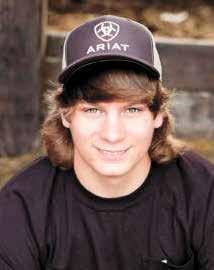
Tell us your greatest high school accomplishment. My greatest accomplishments in high school were getting good grades and graduating.
What do you plan to do after high school? After high school, I plan on going to North Iowa Area Community College for an agricultural program for a year or two, then do something with farming after that.

What are some benets of being raised on a farm? There are many benets of being raised on a farm like learning to work hard at a young age, learning to work and take care of livestock, and doing many different jobs.
How has farm life prepared you for what’s next? Farm life has given me many opportunities to do different things that not everybody gets to do, so it will help me to try new things and gure out what I want to do in the future.
Where do you see yourself in ve years? I see myself in ve years doing something in agriculture or working with livestock.
Tell us about your farm. We milk around 160 cows in a double-12 parlor. My dad, uncle, great-uncle and grandpa all own the farm. We also have my brother and I and a few other employees working on the farm. We nish out all of our dairy steers and have about 900 acres of land.
Justin Buck

Parents: Dennis and Ruth Buck
Goodhue, Minnesota
Tell us your greatest high school accomplishment. Going 26-4 in my senior year of basketball.
What do you plan to do after high school? I plan to work full time on the family dairy farm.
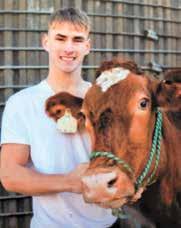
What are some benets of being raised on a farm? Learning a good work ethic at a young age.
How has farm life prepared you for what’s next? It prepares you for always knowing what’s ahead and what’s expected of you.
Where do you see yourself in ve years? I will be a partial owner of the farm and hopefully expanding.
Tell us about your farm. We milk around 140 cows. My dad, brother, sister and I are the main workers on the farm. We have a freestall barn with a robotic milking system, giving us more time to focus on the other areas of the farm. We ship our milk to Organic Valley.




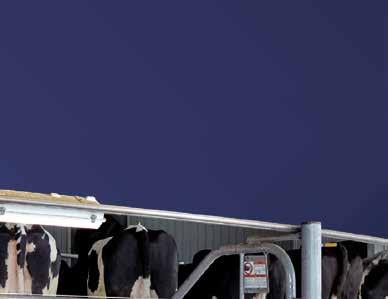
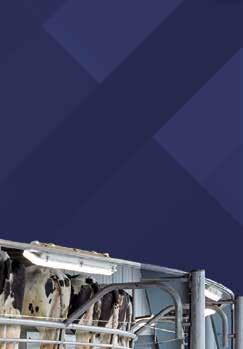







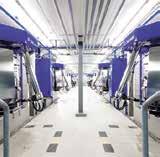











Describe your farm and facilities. We are a family farm founded in 1857. I farm with my brother, Bill, and my father, Allen. We milk 4,300 cows. The cows are housed in tunnel-ventilated freestall barns and milked three times a day on an 80-stall GEA carousel parlor. Our heifers are raised in western Nebraska at Oshkosh Heifer Development.
What forages do you harvest? We harvest mostly HarvXtra alfalfa and mostly brown midrib corn silage as well as some oatlage from new seeding for dry cows.
How many acres of crops do you raise? We raise 1,800 acres of corn silage and buy another 1,700 acres from local growers. We also raise about 1,200 acres of alfalfa and buy another 300 acres from local growers.
What quality and quantity do you harvest of each crop? We typically harvest about 6,000 ton/dry matter of haylage that tests between 165180 RFQ. We harvest about 75,000 tons of BMR corn silage that test about 33%-37% starch.

Describe the rations for your livestock. We feed milk cows and dry cows at our dairy, and we try to feed rations that are relatively high in high-quality forages, containing 60% to 65% forages. The ration is mostly comprised of corn silage, alfalfa haylage, wheat straw, ne ground corn, soybean meal, corn gluten feed and cottonseed. Dry cows are fed oatlage, corn silage and wheat straw.
Describe your harvesting techniques for alfalfa and corn silage. We have our own equipment but also have a local custom harvester help us with harvesting both haylage and corn silage. We run a New Holland chopper while he runs a John Deere. Haylage is cut on approximately 28-day intervals with triple mowers with ail conditioners. Once it is dry enough (40% dry matter), it is merged and chopped into trucks. Corn silage is chopped at about 35% dry matter and processed. High-quality inoculants are a must.


















“We use Udder Comfort™ on fresh cows, works tremendously on fresh 2-yr-olds. It softens udders quickly, reducing pressure and increasing comfort for better performance. We have used Udder Comfort for 10 years, blue spray in the parlor, white lotion at shows. There’s a real benefit from the start of bagging to milking out after,” says Jeff King, Kings-Ransom Farm, Schuylerville, New York, milking 1000 reg. Holsteins producing over 30,000M at 90,000 SCC.










Award-winning King Brothers Dairy products start with quality udders making quality milk. They credit good staff, milking routines, genetics, sand bedding, cow comfort, including Udder Comfort for fresh 2-yr-olds. With over 120 EX in this large freestall herd, they produce A.I. sires like Dynasty, Cadillac and Dropbox from homebred cow families like Cleavage, Cleo, Dextra.






“It’s easy to love the great ones but when you have cows walk in the freestall barn with good feet and legs and udders full of milk, cows the kids enjoy showing and do well with and learn from, that’s what it’s about,” adds Jan King.

Con nued from FORAGE | Page 18


What techniques do you use to store, manage and feed your forages? Our corn silage is stored on one large drive-over pile using a Lactobacillus buchneri inoculant. We emphasize packing density and covering quickly. Haylage is stored in large bunker silos with an inoculant. The walls are wrapped, and it is covered immediately after lling. The plastic is cut daily, and the forage is faced with a silage rake.






Throughout your career, have you changed the forages you plant, and how has that decision helped your operation? We have changed from conventional silage to BMR corn silage. Haylage has all been transitioned to HarvXtra. This has allowed us more exibility in our harvest window while increasing RFQ. We used to plant and feed some winter rye, but we were not able to consistently make highquality dairy forage from it.








Corn silage is stored on one large drive-over pile Corn is stored on one drive-over pile and faced with a silage rake at Abel Dairy Farms and faced with a silage rake at Abel Farms near Eden, Wisconsin. During harvest, the Abels near Eden, Wisconsin. harvest, the Abels emphasize packing density and covering quickly. and
Describe a challenge you overcame in reaching your forage quality goals. It was taking too long to harvest our haylage with our conventional sickle mowers, and we had too much variability in our moistures. We invested in a triple mower and shortened up the time our hay laid on the ground. This improved consistency and helped us eliminate any butyric acid in our bunkers.
How do quality forages play a part in the production goals for your herd?
Cows at Abel Dairy Farms eat their ra on May 18 near Eden, Wisconsin. The Abels focus on feeding their cows high-quality forages, which make up 60% to 65% of the ra on.
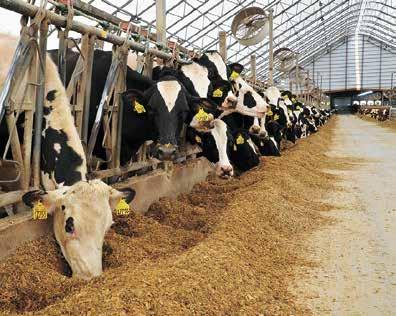
You can’t get high production out of low-quality forages. Every forage we feed needs to be very high quality. We will not sacrice on quality during harvesting our forages or feeding it to our cows.

What are management or harvesting techniques you have changed that have made a notable difference in forage quality? We needed to make the conscious decision that we would only harvest the best quality forages. If the quality is not perfect, we will not put it in the bunker. We purchased a large hay tedder so we could better control the moisture of the haylage we were chopping. We also put an emphasis on kernel processing of our corn si-
lage. We pull samples for kernel process scoring daily during harvest to ensure we are doing a good job.


6000 BC, #544396 .......................... $13,500





NH BR780 2005, 1000 PTO, 5 ft. bales, 7700 BC, #557075 ........................ $13,500
JD 568 2008, 540 PTO, 5 ft. bales, 17,649 BC, #550655 ............................. $14,500
NH BR780A 2007, 540 PTO, 5 ft. bales, 7350 BC, #542859 ....................... $14,750
JD 582 Silage Special 2009, 540 PTO, 4 ft. bales, 22,825 BC, #542349 ....


JD 569 2014, 1000 PTO, 5 ft. bales, 10,100 BC, #553387 ...........................
569 2016, 1000 PTO, 5 ft. bales, 13,560 BC, #554379 ...........................




460R 2018, 1000 PTO, 4 ft. bales, 15,600 BC, #550251 ........................ $33,000 Case IH RB455 2018, 540 PTO, 4 ft. bales, 2091 BC, #543641 .................. $33,500 JD 569 2015, 1000 PTO, 5 ft. bales, 9200 BC, #545913 .............................. $33,900 Krone Comprima V 180XC 2019, 1000 PTO, 4 ft. bales, 13,573 BC, #550353 ....................................................................................................
Case IH RB565 2020, 1000 PTO, 5 ft. bales, 10,094 BC, #556680 ............. $34,900
JD 569 2014, 1000 PTO, 5 ft. bales, 6500 BC, #554698 .............................. $36,900
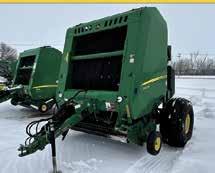

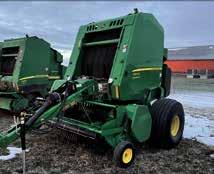
NH Rollbelt 460 2021, 540 PTO, 4 ft. bales, 687 BC, #553694 .................. $42,500

JD 560R 2018, 1000 PTO, 5 ft. bales, 8654 BC, #556060 ........................... $43,000
JD 560M 2019, 1000 PTO, 5 ft. bales, 7000 BC, #550210 .......................... $43,900
JD 560M 2019, 1000 PTO, 7300 BC, #555035............................................ $44,900
Vermeer 605N Cornstalk 2017, 1000 PTO, 5 ft. bales, 6768 BC, #548033 .................................................................................................... $46,500
JD 560M 2020, 1000 PTO, 5 ft. bales, 5491 BC, #552770 .......................... $46,500
JD 560M 2019, 1000 PTO, 5 ft. bales, 3576 BC, #531213 .......................... $46,900
JD 560M 2020, 1000 PTO, 5 ft. bales, 5500 BC, #544100 .......................... $47,900
JD 450M 2019, 1000 PTO, 4 ft. bales, 1918 BC, #531693 .......................... $48,500
JD 560M 2021, 1000 PTO, 5 ft. bales, 8233 BC, #557166 .......................... $51,500
JD 560M 2019, 1000 PTO, 5 ft. bales, 6000 BC, #554127 .......................... $51,900 JD 460M 2019, 1000 PTO, 4 ft. bales, 5898 BC, #557634 .......................... $53,500
JD 460M 2022, 1000 PTO, 4 ft. bales, 2600 BC, #557280 .......................... $57,900
540 PTO, 5 ft. bales, 1516 BC, #547391 ............................ $61,500



#555841 $289,000
Claas 970 2018, PRWD, 2257 hrs., 1639 CH hrs., #533174 ..................... $299,000
JD 8500 2017, PRWD, 1460 hrs., 1070 CH hrs., #553938 ........................ $299,000
JD 8700 2017, PRWD, 2544 hrs., 1835 CH hrs., #546919 ........................ $308,000



JD 8700 2016, PRWD, 1840 hrs., 1103 CH hrs., #525709 ........................ $324,000
JD 8700 2016, PRWD, 1469 hrs., 933 CH hrs., #532572 .......................... $339,000
JD 8800 2017, PRWD, 1728 hrs., 904 CH hrs., #544616 .......................... $339,900
JD 8600 2018, PRWD, 1652 hrs., 778 CH hrs., #188792 .......................... $342,000
JD 8700 2018, PRWD, 1702 hrs., 1069 CH hrs., #541389 ........................ $348,500
JD 9600 2019, PRWD, 1726 hrs., 1130 CH hrs., #553763 ........................ $349,900
JD 8800 2017, PRWD, 1558 hrs., 862 CH hrs., #524820 .......................... $355,000
JD 9800 2019, PRWD, 1893 hrs., 1368 CH hrs., #543355 ........................ $390,000
Claas 940 2020, PRWD, 650 hrs., 480 CH hrs., #532728 ......................... $399,900


JD 9600 2019, PRWD, 1224 hrs., 811 CH hrs., #532049 .......................... $409,900







JD 8300 2022, PRWD, 33 hrs., 9 CH hrs., #537501 .................................. $459,000
JD 9800 2020, PRWD, 1415 hrs., 942 CH hrs., #554135 .......................... $459,900
JD 9900 2019, PRWD, 1224 hrs., 884 CH hrs., #550177 .......................... $493,000
JD 9800 2020, PRWD, 1288 hrs., 833 CH hrs., #536344 .......................... $497,000

JD 9700 2020, PRWD, 1166 hrs., 835 CH hrs., #543646 .......................... $503,000

JD 9800 2019, PRWD, 899 hrs., 660 CH hrs., #550175 ............................ $503,000




JD 9900 2020, PRWD, 844 hrs., 661 CH hrs., #553436 ............................ $508,000
JD 9800 2021 PRWD, 416 hrs., 302 CH hrs., #550106 ............................. $518,000
JD 9900 2020 PRWD, 784 hrs., 455 CH hrs., #561177 ............................. $523,000
JD 9700 2020, PRWD, 961 hrs., 500 CH hrs., #552460 ............................ $524,900



JD 9800 2021, PRWD, 569 hrs., 369 CH hrs., #552624 ............................ $553,000

DeLaval Dairy Service Kaukauna, WI 866-335-2825






























Joe’s Refrigeration Inc. Withee, WI 715-229-2321

















































Mlsna






















Melrose, MN 320-256-3276
Brookings, SD 800-636-5581

been able to graze these cows on wheat pasture in the wintertime. Well, for several years in the fall, there hasn’t been anything.”
Oklahoma dairy cows live outside year-round, and grazing them is what helps dairy farmers meet their bottom lines.
STILLWATER, Okla. – This spring, rain has made all the difference for Tony and Lee Ann Bowman of OkieBow Dairy.
“We’ve been really dry, and it’s just now starting to turn the faucet on and it’s raining,” Tony Bowman said. “We’ve been in a drought for the last couple years really bad.”
The Bowmans milk 50 Jerseys in a 4-cow bypass parlor near Stillwater, which is midway between Tulsa and Oklahoma City. Milk from their farm is hauled 40 miles south to Hiland Dairy Foods in Chandler.
Okie-Bow Dairy is the last remaining dairy farm in Pawnee County. It stands on 200 acres where the Bowmans harvest grass hay and grow winter wheat for pasturing their cows during winter.

“Two weeks ago, before it started raining, I’d have probably said we’d be dairy farming for about another month,” Tony said. “In Oklahoma, we’ve always
The couple had been resorting to buying round bales of grass hay because they did not have enough to harvest themselves. However, the case was the same for other farmers, so options were scarce and prices went up for feed and forages.


“Round bales of hay around here all winter cost $150 a piece if you could nd them, and that’s for grass hay,” Tony said.
That price, Lee Ann said, was over triple of what it had been in better times.
“Usually on a good year, you’re talking $35 to $40 (per round bale),” Lee Ann said. “A few weeks ago, you couldn’t even nd any, and we were still feeding so much hay. Now, since it started raining, we’re cutting back and intensely grazing.”
Tony said the drought is just another factor driving out dairy farms in Oklahoma. The industry has been dwindling for decades there.
“In Pawnee County, the last one went out 20 years before we put one in,” Tony said. “We live at the corner of three counties. In Noble County, there are no dairies, and there haven’t been any in 15 years. Across the road in Payne County, there are three if you count the dairy at Oklahoma State University.”
The dairy industry in Oklahoma, Lee Ann said, is divided into two councils –the southeast and the central. The Bowmans are in the central council.

“As of a couple weeks ago, there are only 16 left in the central council,” Lee


Ann said.
The numbers keep shrinking.
“There’s fewer of us, I’d say week by week,” Tony said. “The drought the last couple of years has taken a lot of people out. People are aging out, and the industry itself is getting smaller.”
Only one mill that makes dairy feed remains in their half of the state, Tony said. Fortunately, it is located just 25 miles away.
“They are only servicing four dairies, and I’m one of them,” Tony said. “They’ve been pretty good to us.”
Lee Ann said those at the mill do not like to see dairy farms disappear either.
“As long as we’re willing to hang in there, they’re willing to make us feed,” Lee Ann said.
Taking on the variable future of dairy farming in Oklahoma was a risk the Bowmans decided to take in 2004 when they bought their property with the goal of becoming dairy farmers. The site had previously been used for grazing beef cattle and had a house and an old hay barn on it – nothing else.
“I always wanted to milk cows,” Lee Ann said. “We bought the farm and worked in town for 11 years while we ac-
quired equipment.”
They also needed to build structures, add a lagoon and set up a milking system. “We built everything from scratch,” Tony said. “We started small and paid for it as we went. Once we started, we never looked back.”
The Bowmans’ dream to dairy farm rst came from Lee Ann. She had grown up on a dairy farm in Indiana, but her
byHighlineManufacturing-ADivisionofBourgaultIndustriesLtd.

BP660BALEPRO®-Withmanynewenhancements thisisagreatoptionforcattleoperationslookingforadurable, well-engineeredbaleprocessor.TheBP660






BalePro®hasadualfeedrollerprocessingchamberwithacentrally drivenflaildrumprocessor(picturedleft).ExpandyourBP660by addingaFeedChopper™and GrainTank.
BP661BALEPRO®-Manynewenhancementshavebeenaddedto thismodelbutunliketheBP660Bale Pro®,the661BalePro®hasaslatandchainprocessingchamber withanoffsetflaildrum.ExpandyourBP661byaddingaFeed Chopper™andGrainTank.

FEEDCHOPPER™ TheFeedChopper™,exclusivelyfrom Highline®,isasecondaryprocessingoptiontocreate shortercutlengths.Ratherthanstationaryknivesthat pulverizeordragleavesoffofstems,theHighline® FeedChopper™trulyslicesthroughthehaycreatingan optimalconsistency.TheFeedChopper™isagreat alternativetotubgrinders.













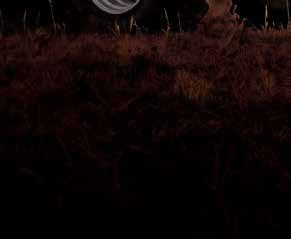




family went through tough times and the farm was foreclosed. She chose to move to Oklahoma for college and her life changed.
“I met my husband and never left,” Lee Ann said.
She also found in Tony a partner who would share her dream of dairy farming. Although Tony had not grown up on a dairy farm, his family ran beef cattle on pasture and he spent time helping on his uncle’s dairy farm.

“I knew a lot about it, and I wanted to help Lee Ann achieve her goal,” Tony said.

They both said they liked the idea of a family dairy farm.
“That’s the way we wanted to raise our kids,” Lee Ann said.
It took seven years to create their dairy while Lee Ann worked as a manager for an agriculture retail store and Tony worked as a realtor and ran his own custom hay baling business.


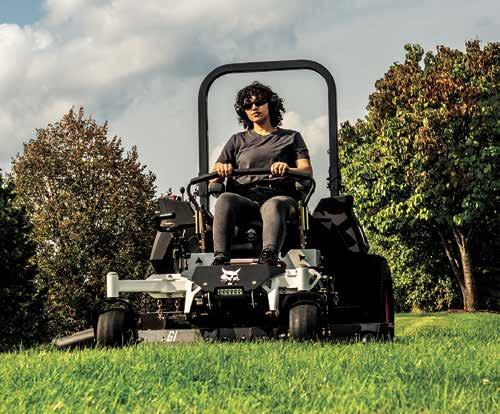
In October 2011, they nally quit their other jobs and began dairy farming full time. Their daughter and son, now adults, helped while growing up. Their daughter Ali, who attended Oklahoma State University in Stillwater and worked on the dairy farm there, is interning this summer for Dairy Farmers of America, of which the Bowmans are members. Their son Cash recently graduated from high school and works for nearby Payne County.
Therefore, Tony and Lee Ann run the farm alone on somewhat of a dairy island.
“Growing up in Indiana, there were a lot of dairies around, and there were good communities, organizations and associations, a lot of involvement,” Lee Ann said. “Out here, there are none.”
Today, their herd is 100% registered Jersey, and all current livestock was born on the farm.
“The grazing, the efciency (of Jerseys) works well, and where we’re located, Jersey milk is worth more; we get paid on components based on butterfat and protein,” Lee Ann said. “Plus, I just love Jerseys. I grew up on a Holstein dairy in Indiana, but I had one Jersey and just fell in love with it.”
Lee Ann said her favorite part of dairy farming is raising calves.
A Jersey cow stands on pasture with the twins she just calved in 2021 on Okie-Bow Dairy near S llwater, Oklahoma. Cows on the farm spend the whole year grazing with windbreaks and carports protec ng them if winter brings worse weather than usual.

“I raise my calves in hutches, and then we turn them out into pastures,” Lee Ann said. “This last winter, we had a couple of days that were really rough (with cold weather and winds), but we build windbreaks and do things like that and usually get along pretty well.”
Watching her calves progress, Lee Ann said, gives her a sense of accomplishment.
“I love all of dairy farming, but I’d have to say my calves are my passion,” Lee Ann said. “I love raising my calves
and seeing them go from babies to the rst time they come in the parlor.”
Tony said he prefers other parts of the job.

“I like milking; I’m not a calf person,” Tony said. “I also like planting the wheat and the farming aspect.”


Together, they have created a successful dairy. Since they have begun, they have been in the top three for milk quality recognition in their area 10 times, seven of those times in rst place.
“We’ve done pretty well and kept our bills paid and done what we wanted to do,” Tony said. “(We were) able to work together and raise our kids while we were here.”
Therefore, the couple said they are able to face the future, no matter what happens with their dairy farm.


“As far as longevity, it really depends on the industry,” Lee Ann said.





Tony agreed.
“I don’t know if people want to work
this hard anymore,” Tony said. “We’re the only ones here, so nobody has an interest, and there’s no extra help or anything like that.”
The man who used to come to the farm once a month to deliver supplies quit because he could not make a living at it. There is only one repairman in the state for milking systems, Tony said, and he lives two hours away. The Bowmans try to have two of everything on hand and x things themselves.
In the meantime, their milk is picked up every other day and the rhythm of dairy farming goes on. Both said they are happy they followed their dream and will be OK if their dairy comes to an end, but they will stop only when they decide they are ready and on their own terms.
“We aren’t going to be forced out; it’s going to be our decision on what we want to do,” Lee Ann said. “Right now, we’re just going day by day.”

each one averaging 25 acres of rye grass and some clover. All yearlings, milk cows and dry cows are put in the paddocks to graze.
By Tiffany Klaphake tiof my decision.”
any.k@dairystar.com
– When Nick Seitzer was looking for an internship between his junior and senior year at the University of Minnesota, he wanted something different.
“I wanted to go abroad and work on a farm,” Seitzer said. “I thought that would be a cool experience.”

Seitzer grew up on his family’s dairy farm near St. Peter where his parents, Peter and Ann Seitzer, milk 65 cows in a tiestall barn and farm 625 acres.

After looking into various options in several countries, Seitzer eventually found the program called Rural Exchange New Zealand.
“I chose New Zealand because it has a totally different way of farming from what I am used to,” Seitzer said. “The natural beauty of New Zealand was also part
Another reason Seitzer was interested in New Zealand is because grazing is so essential there. He wants to incorporate a hybrid form of New Zealand grazing into the management style of his family’s farm.
“Being able to get some hands-on experience and learning more about grazing was benecial,” Seitzer said.
Seitzer’s experience lasted from July 2022 through January. He lived with a host family, Peter and Lisa Scott, who milk 1,000 KiwiCross cows in a 54-cow rotary parlor in Methven, Canterbury, New Zealand. KiwiCross cows are a mix of Holstein and Jersey.
“It was a very special cultural experience to be able to live with (the Scotts), and they treated me like family,” Seitzer said. “We still update each other regularly.”
The Scotts’ farm, like most dairy farms in New
“The cows calve in the paddocks,” Seitzer said. “Several times a day during calving season, a couple of us would drive around on four-wheelers with a trailer and pick up the calves. The hardest part was matching the calf with the mom. Attention to detail is crucial.”
Besides grass, the cows are fed crushed wheat, palm kernel, molasses and a pellet mix as they are milked on the platform. Palm kernel is a byproduct of palm oil manufacturing.
Because the Scotts do not feed silage, they do not need the equipment and storage space that would otherwise be required. In fact, most eldwork is hired out.
While Seitzer was there, his responsibilities included milking, managing dry and fresh cows and eventually the milking cows, helping with calving and setting up fences for grazing.
Zealand, uses grazing as the main feed source. Cows are not fed corn silage like

many cows in the U.S. The dairy has 44 paddocks that are used to graze the cows,


“I got there in the middle of July, and that was right when calving started,” Seitzer said. “Most farms calve seasonally from July through September. After calving, a 12-week mating period will begin which will end around the beginning of January, and by late May, cows are getting dried off before the cycle repeats itself.”
Even though farming strategies are handled differently there, it did not take long for Seitzer to settle into his new routine.





“They are so efcient over there,” Seitzer said. “They don’t do any prep work when milking the cows. (The cows) walk into the carousel and we attach a milker. Then they get a spray as they leave the parlor. Many farms are able to achieve somatic cell counts under 100,000 throughout the season.”



One of Seitzer’s favorite memories of his time abroad was tidying up a section of the cow yard with his host father, Peter.

“When I got there, I noticed there was this section of cattle yard along the creek that was run down and had lots of trees in it,” Seitzer said. “I said I would help clean that up.”




Together, the two totally transformed the section, Seitzer said.

“(Peter) told me that it was because of me that he wanted to transform that area,” he said. “It made me really feel like I made a difference. I was able to plant a pin oak as a way for them to remember me.”
The region of Canterbury where Seitzer stayed is an agriculturally dense area with a heavy population of dairy farms that average 1,000 cows. There are many farms other than dairies in the region that also host young people from other countries to work on their farms.







“I didn’t expect to meet and make so many friends,” Seitzer said. “I thought I was just going there to work, but it didn’t take long to realize that the other people there were a big part of the experience. Now, I have a lot of strong connections with people from other countries.”
Seitzer talks with his new friends and his host family often, and they share farming and life ideas and goals. He hopes to visit several of his new friends in their home countries someday, which include Denmark, Sweden, Germany, France and the Netherlands.
“It was such an amazing experience that I will never forget,” Seitzer said. “It is denitely an experience I would do again and an experience I would encourage others to do.”

 Krista Klinkner Genoa, Wisconsin Vernon County 60 cows
Krista Klinkner Genoa, Wisconsin Vernon County 60 cows
Tell us about your family and farm. I farm with my husband Travis and our six children, Liam, Brad, Hank, Alice, Tressa and Aiden, ages 8 and under. We purchased my family’s farm in 2015 and continue the dairy farming tradition.
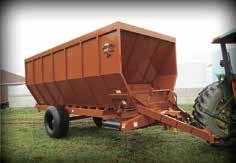


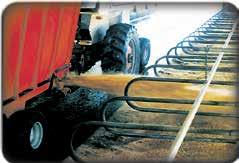





What is a typical day like for you on the dairy? Milking cows, feeding and managing care for my youngstock (calves 0-3 months),and updating books make up a typical day. During planting and harvest season, I’ll make sure tractor-friendly meals are available for hungry helpers.
What decision have you made in the last year that has beneted your farm? I’ve been pairing up calves after weaning from milk for a few years. Recently, I’ve been pairing up at younger ages, as young as day one. We’ve noted an increase in their resiliency as a result. We’ve also been training our kids on daily chores. This has undoubtedly increased the efciency of our operation. Plus, we’re training our replacements, hopefully.
Tell us about your most memorable experience working on the farm. I have so many. My birthday, being in early May, is usually when the milking cows go out on pasture for the rst time of the year. I look forward to it every year. It is probably going to be one of the biggest memories for the wheelchair for me.
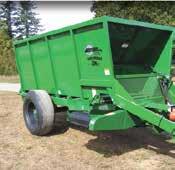


What have you enjoyed most about dairy farming or your tie to the dairy industry? I enjoy the opportunity to contribute a healthy food source to our community in an environmentally conscious manner. I enjoy watching the youngstock I helped raise grow into strong, beautiful and productive milk machines. It’s a thrill to watch them enter the barn, ready for work.
What is your biggest accomplishment in your dairy career? Passing on the tradition to our children. They love and respect the animals and have picked up a great work ethic, which will serve them in their future endeavors. I’m thankful to be able to raise our children on our dairy and watch them grow in their understanding and love for agriculture.
What are things you do to promote your farm or the dairy industry? Education for the public on where their food comes from is something we strive to do. We have had a few elementary classes visit our farm.
What advice would you give another woman in the dairy industry? A good dose of faith, selfawareness and a goal-oriented work ethic will always serve you well.
When you get a spare moment, what do you do? I don’t have many, but I always try to put in a little garden, which my kids help with. They love to see their food grow and enjoy the fruits of their labor.


Last year, during one of my county fairs, I remember walking through the buildings along the fairgrounds and thinking, “It smells strongly of campre.”
After meandering around, I deduced it was not a local campre but instead wildres up north, with the smell of burning carried on air currents. This prompted me to think, “What should livestock producers do to prepare for natural emergencies. What is that rst step?”
In Minnesota, we get it all.
By Dana Adams U of MProducers should have emergency plans in place for tornadoes, oods, severe snowstorms and res.
I have worked with farms that have a so-called go binder, a binder easily accessible in the farm ofce with the answers. My favorite ones were beautifully labeled and organized with tabs to minimize fumbling during chaotic situations. Physical documents are the gold standard, but there is value in electronic documents. These documents can be easily stored on a shared platform for all members of the operation to access and update via smartphone (at the kitchen table or in the tractor) to keep the emergency plan relevant.
A good place to begin building your farm’s binder is building a complete map of your farm. This should include roads, lanes and driveways. A valuable component for any responding emergency per-





sonnel is to include all fences and gates, locations of all livestock, locations of all hazardous substances, and locations of shut-offs for electricity, water and other utilities. I have worked with farmers to include telephone pole markers in their plan to assist emergency personnel in navigating farms. Dad and Mom may know where everything is, but having this map both accessible and familiar will make guiding emergency responders that much faster.
Binders should also include the important phone numbers up front and center. The top four numbers to have in the cover’s inside pocket are the veterinarian, county emergency management, insurance agent and Extension Educator. Additional numbers to include are of the businesses that supply services to or for the farm. If appropriate, include your milk processor, feed and fuel delivery, and anyone else who is on the farm regularly and should be alerted after something happens on the farm. Taking some time to build this useful list can help minimize the stress of a chaotic situation.
When creating an emergency document with a farm team, take some time to review the farm’s current insurance coverage and emergency supplies stores on-farm. This is an opportunity to be in contact with the insurance agent so you

know your farm’s coverage during emergencies. Are emergency supplies in a consolidated location that everyone on the farm team knows about? Are generators functional and re extinguishers up to date? Better to know the answers to these questions now versus in your hour of need. Keep in mind this internal audit is a great time to check buildings for any structural compromises or loose material. Repairing weak areas and cleaning unused material could help keep animals and people safe during tumultuous circumstances.
To prepare effectively instead of on the y, it is encouraged to have a written plan of spaces to use in an emergency for livestock and equipment relocation. This helps answer the questions of where can the tractor be moved if the roof collapses in the storage shed. Where do the calves go during a ood? Where do the cows in the milking herd go if there is a re in the barn? These hard questions are all too real and deserve answers in the form of a plan.
The utilization of the plan your farm generated comes down to selecting be-







Dana Adams, adam1744@umn.edu
320-204-2968
Joe Armstrong armst225@umn.edu
612.624.3610

Luciano Caixeta lcaixeta@umn.edu
612-625-3130
Gerard Cramer gcramer@umn.edu
612-625-8184
Marcia Endres miendres@umn.edu

612-624-5391
Joleen Hadrich jhadrich@umn.edu
612-626-5620
tween two scenarios: one for shelter in place and one for evacuation. For evacuation plans, reference the map you have diligently and meticulously created. What is the best escape route for animals to a safe space? What doors or gates need to be opened and what needs to happen if the route is blocked? Remember, writing down the evacuation plan puts everyone on the same page rather than assuming. Finally, plan for your people. Write down where they should take shelter and where they should evacuate to.
This binder is a tool. Like any tool, it is most helpful when it is maintained and used rather than collecting dust on the bottom shelf. By taking the time to build an accurate map and placing the binder in a physically and technologically accessible place as well as stating what needs to happen in emergencies, farm teams can effectively hope for the best and make plans for the worst. Having this tool in place can reduce stress for all involved, empowering individuals to control as much as they can and make plans for things they can’t.
Les Hansen hanse009@umn.edu
612-624-2277
Brad Heins hein0106@umn.edu
320-589-1711
Nathan Hulinsky huli0013@umn.edu
320-203-6104
Karen Johnson ande9495@umn.edu
320-484-4334
Emily Krekelberg krek0033@umn.edu
507-280-2863
Claire LaCanne lacanne@umn.edu
507-332-6109
Brenda Miller nels4220@umn.edu
320-732-4435
Erin Royster royster@umn.edu

Isaac Salfer ijsalfer@umn.edu
320-296-1357
Jim Salfer salfe001@umn.edu
320-203-6093
Mike Schutz mschutz@umn.edu
612-624-1205
Melissa Wilson mlw@umn.edu
612-625-4276
Isaac Haagen hagge041@umn.edu
612-624-7455
I recently attended the Dairy Cattle Welfare Council’s annual symposium in Fort Worth, Texas. The symposium is a great opportunity to learn and discuss welfare topics within a community of academics, industry representatives, veterinarians, dairy producers, retailers and others interested in this eld.
 By Marcia Endres U of M
By Marcia Endres U of M
Topics this year included the use of technology to monitor welfare, lameness and environmental management in automated milking systems, cow behavior in AMS and automated milk feeders for improved welfare of group-housed calves, among other topics.
Karen Christensen, director of animal welfare for Tyson Foods, kicked off the event with an interesting talk on using animal observations to enhance animal welfare.
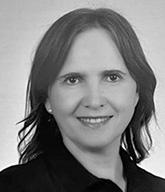
Using a broiler example, Christensen shared a preference research they conducted that clearly showed that when the birds were not eating or drinking, they preferred to be in a darker space. This led them to design houses that have brighter lighting over feed and water only, not the entire house. The public might demand that chicken houses have bright and natural light all over the house, but now they have the research to show that this more targeted lighting is what the animals prefer. One of the additional benets is that producers are saving on electricity costs.
Nick Bell, of the United Kingdom, showed examples on how we can use technology to assess ve major needs of animals: comfortable environment, natural behavior, health and safety, nutrition, and if they are fearless and calm.
Using data and animal observations, paired with management and housing interventions on 40 farms at one of their projects, he showed a reduction in median lameness prevalence from 40% to 10% in about 14 years. Recent efforts include using cameras and computer vision technology to track cows. Another technology uses videos of hooves as cows exit the footbath to detect abnormalities. He suggested that future advancements on monitoring animal welfare are likely to involve combined technologies and big data.
Nigel Cook, of the University of WisconsinMadison, talked about how to manage foot lesions, or lameness, in AMS herds. For digital dermatitis, topical treatment is the best option. Using computer vision for DD detection, cows can be sorted by the robot to a separation pen to be treated. For maintaining low incidence of DD, cows go through a footbath.
What about sole ulcers? Cook referred to sole ulcers as stand up disease. Cows need to be off their feet. He expressed major concerns about overcrowding stalls in AMS pens. Sand-bedded AMS farms have the lowest lameness prevalence, similarly to conventional milking farms; however, he also said sand equals more equipment maintenance. Hoof trimming in AMS is done one cow at a time; therefore, having someone trained to hoof trim on the farm is a preferred option for AMS herds. For whiteline lesions, he suggested appropriately grooved ooring and enough alley space for cows to move around the pen freely. It is also important to have excellent ventilation and heat abatement in the barn. First-lactation cows had greater waiting times to enter the robot. If possible, separating them from older cows is the best option to reduce competition.
Trevor DeVries, of the University of Guelph, shared research on cow behavior in AMS. Their
producer survey indicated that cows’ lives improved when they transitioned to AMS, with more behavioral freedom and better health Barn design and management, stocking density, feeding management and lameness can all impede success. Every 4-inch increase in feed bunk space resulted in 0.66 pounds of milk per cow. Feed should be available at all times to optimize cow time budgets. Using more frequent feed push-ups increases milk production. He shared an example of milking patterns, which showed that there are peak milking times. Adjusting chores accordingly to these times is preferred. Lame cows were 2.2 times more likely to be fetched and produced less milk. Fearful cows were less likely to be delivered the target amount of pellets in the robot.
Melissa Cantor, of Penn State University, shared studies where machine-learning algorithms developed using feeding behavior data from automated milk feeders and lying behavior from wearable sensors were able to detect disease in calves with great accuracy in a research farm setting. Their next step will be to test these algorithms on commercial farms.
Other topics were presented at the conference, including presentations by six graduate students One of our students, Bianca da Costa, presented results of a study comparing types of housing for preweaned dairy calves (individual, pair, small group or with their dam). There was also a poll of the audience about which of these calf housing options would be the most common in 20 years from now; 65% of the audience chose the option of group housing, 25% pair housing, 6% with their dam, and only 5% chose individual housing. This would be quite a shift from current housing in the U.S., which is mostly individual calf housing.
CIH 215 Magnum, 2,500 hrs., FWA .....$138,000

CIH 8950 1,600 hours ..............................$165,000

CIH 8920, 2WD, 1000 hrs. .........................$13,000
CIH 8910, 2WD, 4,100 hrs .........................$72,000




CIH 7240, 2,500 hours, coming in ...........$110,000
CIH 7120, FWA, 2800 hrs. .....................Coming In
CIH MX120 ............................................Coming In

CIH MX110, FWA, 1600 hrs. ......................$65,000
IH 1466 restored, new 20.4x38 Firestones$38,000
IH 1456, cab ..............................................$22,000
IH 1086, nice..............................................$21,000
IH 806 ....................................................$11,000
TILLAGE
CIH 527B ripper .....................................$13,500

CIH 530B................................................$18,000
CIH 870 7-shank ....................................$38,000
CIH Tigermate II, 26’ ..............................$28,000
CIH Tigermate II, 26’ w/rolling basket ....$32,000
CIH Tigermate 200, 30’ ..........................$44,000
CIH Tigermate 200, 28’ w/rolling basket$40,000
CIH Tigermate 200, 32’, w/4 bar drag ....$33,000
CIH Tigermate 200, 32’ w/rolling basket$45,000
JD 714 11 shank chisel plow .................$14,000
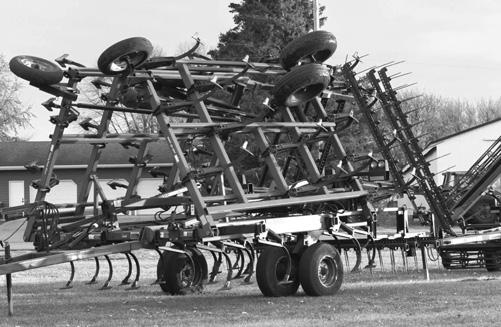

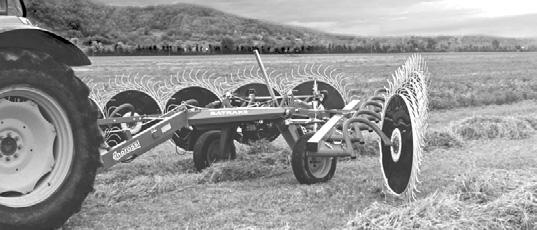
CIH 5700 chisel plow, 23’ ...................Coming In
CIH 4300, 32’ ...........................................$7,500
CIH 4800, 24’ ...........................................$6,500

NEWTON, Wis. – A manure digester can be seen as an investment in alternative revenue as well as an investment in sustainability. For the Grotegut family, their digesters are serving both purposes.

The Dairy Business Association and Edge Dairy Farmer Cooperative held a Farmer-to-Farmer Policy Picnic May 3 that began with a visit to Grotegut Dairy near Newton. The operation is home to two methane anaerobic digesters built in 2008 and 2010, which were the focus of the tour hosted by Eric Grotegut.
Grotegut farms with his wife, Rosario, and his uncle, Doug, and Doug’s son, Kip. The family milks 3,100 cows and farms about 3,300 acres. Cows are milked in an 80-stall rotary parlor built in 2011, and the majority of the herd is housed in a cross-ventilated freestall barn built in 2010 that was added onto in 2014 and 2019. The stalls are deep bedded with separated-manure solids that come from the digester.
“We like that we’re able to use a recycled product to bed our cows, and it’s comfortable for them to lay on,” Grotegut said. “Also, the separation process takes nutrients out of the liquid manure, which gives us more exibility with manure application and reduces the odor of the manure.”
The Groteguts started out selling electricity from their digesters, which
they did for about seven years until it was no longer protable. In 2019, they switched to making and selling renewable natural gas. The dirty gas from the digesters is taken off the line and run a half mile up the road to a cleaning site where it gets scrubbed, cleaned, compressed and injected into the main line.
The Groteguts own and operate the digesters while partnering with DTE
Biomass Energy – a Detroit, Michiganbased energy company that purchases the gas from the Groteguts and also handles the carbon credits the digesters generate. By rst selling electricity and now natural gas, the Groteguts are profiting from the renewable energy their digesters produce. Each 1.8-milliongallon digester is built for 2,400 cows.
The Groteguts have bedded with manure solids since 2005, having purchased the material for several years before installing their rst digester. Cows are bedded three to four days a week, and stalls are groomed every night.
Manure in the digester is heated to 102 degrees for 21 days to kill pathogens. It is then run through a screwpress, which removes the water. This takes the solids down to 70% moisture, which is what the Groteguts use for bedding. The solids separator provides bedding daily, running about 15 hours per day.
According to Grotegut, the recycled bedding makes for a comfortable bed but does stir up mastitis in the herd from time to time due to pathogens that remain in the solids. However, the Groteguts have learned to manage challenges of the bedding, and for the last two years, the farm has maintained an average somatic cell count of 130,000. The barn’s ventilation system helps dry the bedding, which makes for a cleaner product.
“The bafes force the air down and keep it lower to the ground, which dries the bedding,” Grotegut said. “But in the winter, the bedding doesn’t dry as well, which can cause more problems with mastitis.”
After the tour, the picnic continued with dinner and other speakers at Farm Wisconsin Discovery Center – an interactive educational destination near Manitowoc. Grotegut Dairy has a partnership with the center, supplying cows for calving demonstrations and also offering tours of their farm to those who visit the center.
“We like being able to help educate the community in this way,” Grotegut said.
During the picnic, Kyle Lange, who owns an American Family Insurance agency near Menasha, discussed insurance for digesters. A large portion of Lange’s work is farm insurance, and a couple of his customers have digesters.
“Every project is a little different,” Lange said. “Some digesters are onsite, some are off-site. Some are owned by the farmer, and some are owned by the digester company.”
Lange recommends meeting with the contracting team and thinking about who is responsible for which items within the project.
“It can be tricky when you assume who is responsible for maintaining a certain piece of equipment, such as a sand separator,” he said. “If there is a re or explosion, who is responsible for covering it? You certainly don’t want to nd that out after the fact.”

Lange said digesters are covered under two major forms of insurance – property and liability. The property side includes coverage for things like
collapse, explosion and re. Lange recommends an added equipment breakdown endorsement that covers pressure, mechanical or electrical failures.




“Our policy can also cover the income component of that part,” he said. “If you’re responsible for some of the major components, you’re going to want that endorsement.”
The liability portion differs upon the type of setup at each farm. If a farm has a pipeline running straight from its manure pit to the digester, there needs to be an understanding of where the farm’s liability ends and where the digester company’s liability begins.

“If manure is going down that pipeline and the life expectancy is 25 years, but 17 years go by and all of a sudden there’s a seepage that occurs, whose liability does that go under?” Lange said.
Any shared ownership of the sale of gas or a fertilizer component should be discussed with the farm’s attorney and insurance agent as well, Lange said. If a farm is opening itself up to exposure for this aspect, separating the liability across several entities is recommended.
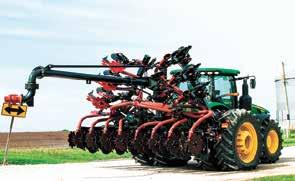
“There are many different areas of assets on a farm – from equipment to buildings to land – that you can use different LLCs to separate some of the liability exposure,” Lange said. “You wouldn’t want the dairy farm LLC to own it all since liability is usually where the biggest claims come from.”
From a coverage perspective, Lange said it is better to do due diligence beforehand than to assume and nd out after a catastrophe that the digester was not adequately covered. Taking steps to properly insure a digester project will safeguard a farm from potential issues.

This past weekend at church, a friend started talking about the cozy morning they had had next to the replace. Usually, I would think nothing of it, but this time, with only a major twinge of jealousy, I mentally compared said cozy morning to my reality of being jolted awake by a call up the stairs about the beef cows being out and then spending the next 40 minutes out in the damp, cold rain putting the cows back in and getting the fence xed.
On a much lighter note, I honed my negotiation skills in the barn, especially since I was the youngest. I get along really well with my siblings, but the debates always started when it came to calf management. I remember an older sibling coming home from college, brimming with new ideas of how we could do things better, and like politicians working together across the aisle, I stonewalled most of them whenever I could.

June 2
MN Sibley County Breakfast on the Farm: Join Five Star Dairy for pancakes, French toast, eggs, sausage, milk, coffee, orange juice, ice cream and cookies. The event runs from 6:3010:30 a.m. The cost is $9; kids under 5 are free. Five Star Dairy is located at 25738, State Highway 5, Arlington, Minnesota.

June 9
MN Waseca County Mill Wheel
Dairy Show Clinic: Waseca County
 By
By
Life is just different on the farm. I spent all my growing up years helping with calves. I reigned champion over myriads of buckets, bottles, pails of warming water, electrolytes and colostrum, perfecting my tummy rubbing skills and every trick my sisters and I could concoct to coax calves to drink their bottle.
The problem with having 10+ years of calf-feeding experience by the time you nish high school is that it means you started feeding calves when you were young and clueless. I still giggle as I remember my sister reacting in abject horror to the fact I had decided to stir up the milk replacer with the bottle scrubbing brush the night before because I could not nd the usual (clean) whisk. I remember thinking she was way overreacting, but now I realize how ridiculous and completely undermining to our sanitation and disease prevention my young choice was.
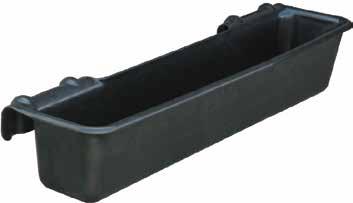
Calves teach humbleness. I remember sitting at the kitchen table one Sunday evening in 2020, crying because calf feeding was so overwhelming. We had a new disease in our calves that year, and no matter what we did, it felt like it was not enough. It is those days that make you strong somehow.
My problem with the new ideas was they generally always seemed like more work than the old ones, which in my mind worked well enough. With this open and supportive attitude, I did my best to play devil’s advocate and cling to the status quo. Between my sometimes-overzealous sibling and my often-lazy self, we worked out enough of a balance to usually have pretty nice calves.
My secret weapon was to convince Mom that my way was right and then get her to tell my older sibling we were going to do it the way I wanted it done. There is an evil satisfaction in watching your older sibling bend to your will by proxy.
Parents taking vacations creates an infamous experience when you stay behind on the farm whether you feed calves or otherwise. I remember my sister and I and a local high schooler watching the farm for one simple weekend. Our dairy calved seasonally, and that weekend we got one-third of the calves we were expecting the entire fall in three days. We never got that many calves in one weekend before or after.
Yet, dairy farming was not just hard days or life lessons learned. I think of belting gospel songs together with my sisters in the milkhouse, braiding dandelions while I guarded a pasture gate and a lifestyle that could include catching interesting bugs in the farmyard and putting them in the freezer in old salsa jars to be identied later – or more likely forgotten about. Today, I don’t do the hard work of dairy farming, I just write about it. But, who I am is forever changed because I grew up in one of the hardest, and best, places in the world.
June 3
SD Dairy Fest: Come enjoy cows, face painting, a photo booth, coloring tables, corn hole, cheese making, inatables, South Dakota State University ice cream and a free grilled cheese lunch from 11 a.m. to 2 p.m. This year’s event will be at Hammink Dairy, 46914 200th St., Bruce, South Dakota. Meet at the Davis Dairy Plant, located at 1225 College Ave., Brookings, South Dakota, for an optional tour of SDSU’s manufacturing plant and then hop on a shuttle to Hammink Dairy.
MN Clay County Breakfast on the Farm: Breakfast at Kasin Farms will be prepared by the Hawley Lions and will include pancakes, sausage and eggs with dairy products sponsored by Riverview REW Company. The event runs from 7 a.m. to noon, with freewill donations being accepted. Country music will be provided by Jan Severson. Kids activities will include bounce houses, farm bingo, barrel train rides, corn box and book readings as well as a pedal tractor pull. Registration for the tractor pull begins at 8:15 a.m. with the event beginning at 9 a.m. Visitors can also register for drawings to win half a butcher hog, $400 in beef bucks and other prizes. Kasin Farms is located at 3728 230th St. S., Hawley, Minnesota.
June 4
ND LegenDairy Open House at VanBedaf Dairy: Come from 11 a.m. to 3 p.m. to tour the farm. Take a tractor wagon ride and enjoy a picnic area that includes milk, cheese, gelato and other food options. VanBedaf Dairy is located at 170 70th Ave. NE, Carrington, North Dakota.
4-H and presenter Katie Coyne invite you to the clinic from 9 a.m. to 3:30 p.m. at the Waseca County Fairgrounds Livestock Arena. 4-H’ers of all experience levels in third grade and up are invited to bring a dairy calf or heifer to experience hands-on learning in washing, tting, clipping, showmanship and more. The workshop is geared for 4-H dairy project members in third grade (completed) and older (no cloverbuds). High school aged youth are highly encouraged to attend as well. There will be a cost of $25 to participate, which includes demonstrations and the opportunity for you to practice on your own calf or heifer with input and expertise from Coyne. Prizes will also be given out. The Waseca County Fairgrounds Livestock Arena is located at 409 Eighth Ave. NE, Waseca, Minnesota.

June 10
SD MoDak Dairy Day: Join the Moes family from 10 a.m. to 1 p.m. for a dairy farm tour, free grilled cheese sandwiches and ice cream. For more information, visit Facebook. MoDak Dairy is located at 46516 171st St., Goodwin, South Dakota.
MN Wright Carver County
Breakfast on the Farm: Goldview Farms of Waverly, Minnesota, will be hosting this year’s event. Breakfast will be served from 7 a.m. to noon. The Bakeberg family invite you to their dairy and crop farm for a funlled morning, rain or shine. Come for breakfast; stay for music, animals and opportunities to learn about local agriculture. Explore a working dairy farm and learn what it takes to get dairy products from the farm to your dinner table. This is fun for the whole family with hands-on educational attractions. Parking will be available from the Howard Lake-Waverly-Winsted High school with shuttles to and from the farm available from the school running from 6:45 a.m. to 1 p.m. The shuttle takes approximately ve minutes each way. Public parking is not available at the farm. Howard Lake-WaverlyWinsted High School is located at 8700 County Road 6 SW, Howard Lake, Minnesota.

TridentPulsation™ optimizes the machine to animal interface by properly controlling the liner action on the teat. It starts by holding the liner fully open to ensure a consistent full attach followed by a brief stimulation. The positive pressure fresh air system then ensures a consistent gentle full teat massage to completely rest the teat preventing swelling/damage. It then holds the liner fully open for a gentle detach. Consistent gentle milking action prevents teat harm ensuring healthy teats with quality milk allowing more cows to remain in your herd. Consider our customers who reduce cull rates by 1/3 keeping high producing cows in the herd while reducing heifer raising cost by 30%. Why not start saving $400/cow/year now?
It is truly amazing how quickly our producers can get the crop in the ground once the conditions are right. Timing is everything in agriculture. May your corn rows be straight, your pre-emerge herbicide application work well and your rst cutting of hay be exceptional. Be proud of what you have accomplished. We certainly are proud of you. May your 2023 crop be everything you hope it could be.
Agricultural producers in Minnesota who have not yet completed their crop acreage reports after planting should make an appointment with the U.S. Department of Agriculture Farm Service Agency before the applicable deadline.
An acreage report documents a crop grown on a farm or ranch and its intended uses. Filing an accurate and timely acreage report for all crops and land uses, including failed acreage and prevented planting acreage, can prevent the loss of benets.
The following acreage reporting dates are applicable in Minnesota: nursery crops May 31, spring-seeded crops including hemp and wild rice July 17, beans other than dry edible Aug. 15, turf grass sod and oriculture Sept. 30 and apiculture and fall-seeded small grains Nov. 15.
Acreage reporting dates vary by crop and by county. Contact your local FSA ofce for a list of acreage reporting deadlines by crop.
To le a crop acreage report, producers need to provide the crop and crop type or variety; intended use of the crop; number of acres of the crop; map with approximate boundaries for the crop; planting date(s); planting pattern, when applicable; producer shares; irrigation practice(s); acreage prevented from planting, when applicable; and other information as required.
If the crop has not been planted by the acreage reporting date, then the acreage must be reported no later than 15 calendar days after planting is completed.
If a producer acquires additional acreage after the acreage reporting date, then the acreage must be reported no later than 30 calendar days after purchase or acquiring the lease. Appropriate documentation must be provided to the county ofce.
If crops are covered by the Noninsured Crop Disaster Assistance Program, acreage reports should be submitted by the applicable state, county or crop-specic reporting deadline or 15 calendar days before grazing or harvesting of the crop begins.

Producers should also report crop acreage they intended to plant but, due to natural disaster, were unable to.
Prevented planting acreage must be reported on form CCC-576, Notice of Loss, no later than 15 calendar days after the nal planting date as established by FSA and USDA’s Risk Management Agency.

FSA offers continuous certication for perennial forage. This means after perennial forage is reported once and the producer elects continuous certication, the certication remains in effect until a change is made. New option to view, print and label maps
Producers with an eAuthentication account linked to their USDA customer record can now access their FSA farm records, maps and common land units by logging into farmers.gov. A new feature will allow producers to export eld boundaries as shapeles and import and view other shapeles, such as precision agriculture boundaries. This will allow producers to view, print and label their own maps for acreage reporting purposes.

Producers who have authority to act on behalf of another customer as a grantee via form FSA-211 Power of Attorney, Business Partner Signature Authority, along with other signature types, or as a member of a business can now access information in the farmers.gov portal.
Producers can learn how to use the farmers.gov farm records mapping functionality with this fact sheet and these video tutorials.



ERP Phase 2 and PARP
Additional emergency relief and pandemic assistance has been made available to producers through the Emergency Relief Program Phase Two and the Pandemic Assistance Revenue Program. These new, revenue-based programs apply a holistic approach to emergency assistance and acknowledge the myriad of crises producers have faced in recent years. As we look to better understand and respond to producers’ overall losses rather than provide assistance solely based on a single disaster or a targeted commodity, we are taking important steps toward providing producers with the support and resources they need to continue feeding our communities. The deadline to apply for ERP Phase Two and PARP is June 2.
Farm Service Agency is an Equal Opportunity Lender. Complaints about discrimination should be sent to: Secretary of Agriculture, Washington, D.C., 20250. Visit www.fsa.usda.gov for necessary application forms and updates on USDA programs

Eighty-nine farmer leaders from across the 10-state Midwest region attended Midwest Dairy’s annual meeting in early April in Des Moines, Iowa. This meeting is especially unique because it is the only time each year that all division board members can gather in the same location and discuss dairy promotion and research efforts led by the checkoff. In addition to the division and corporate board meetings hosted during this event, Midwest Dairy staff were also able to highlight checkoff work in three hands-on breakout sessions.
By Mackenzie Felt-Lewis Corporate communications manager, farmer communications Midwest Dairy



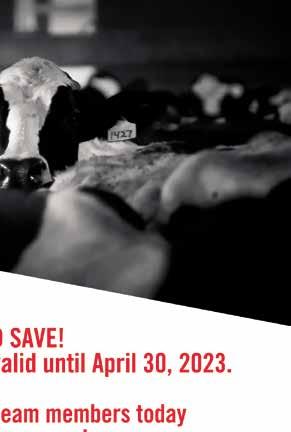
These different breakout sessions were designed to allow dairy farmers to learn more about and experience the work done with their checkoff investment. In addition, they had the opportunity to ask questions and to see how the expertise of Midwest Dairy staff is used to reach consumers working with and through partners.
One breakout session allowed farmers to experience a day in the life of a college student by showcasing checkoff trust work with members of Generation Z on college campuses. This round-robin style breakout allowed farmers to rotate around the room to different stations. One station showcased our partnership with Version1, allowing farmers to try their hand at playing the popular video game Rocket League and also ask questions about the esports video gaming platform. Another station highlighted the University of NebraskaLincoln training table, showcasing checkoff’s work with Husker Performance Nutrition staff. Midwest Dairy staff also encouraged farmers to enjoy a Greek yogurt snack served on campus and feel like a true athlete when taking a photo with the UNL training table backdrop. The nal two stations included a classroom sustainability experience where farmers learned more about the Gen Z demographic’s opinions and actions and a de-stress activity. Farmers were encouraged to have fun and de-stress with a Santa photo op and peppermint hot chocolate milk that was also served at the Winterfest event in 2022 at Iowa State University.
Another breakout session got farmers in the competitive spirit by playing a “Family Feud”-style game to learn more about building demand for dairy with retail and food service partners. Farmers enjoyed playing dairy farmer feud, revealing specic retail and food service activations in 2022. Farmers walked away with a deeper understanding of checkoff demand work by observing the showcasing of sales activations and by seeing how and why we work with partners. In addition, innovative dairy products were available for tasting, allowing farmers to experience different dairy pairings that consumers are enjoying in the marketplace today. These samples included Casey’s breakfast burritos, a avored milk limited-time offer from KwikTrip/Kwik Star, and a smoothie from a recipe that won a Fareway dairy recipe contest.
Lastly, farmers returned to high school to learn how checkoff creates trust for dairy by using the STEM curriculum through high school science classes and curriculum thought leaders. This STEM session gave a rst look at the structure of lessons that are in development aimed at bringing sustainability and dairy to life in the classroom. Farmers participated in a hands-on science experiment to showcase these efforts and experienced a lesson plan teachers might have kids participate in. These lessons will meet the new science standards badge requirements and be free to any school district.
The dairy experience didn’t stop there. Monday evening, a reception featured Midwest Dairy’s work to inspire innovation in dairy. Product samples were available showcasing partners DARI LLC and Twisted Egg
Roll. Farmers got to experience two of DARI LLC’s MOO’V milk avors, strawberry and vanilla, and learn how this high-protein, low-sugar drink helps kids ll up with uniquely avored and naturally sweetened whole milk. Twisted Egg Roll also provided apple cheesecake, buffalo chicken, mushroom veggie melts and cheesesteak eggrolls, allowing farmers to experience a variety of menu options. After partnering with The Hatchery Chicago, Midwest Dairy launched a pitch contest for newer businesses to win exclusive access to a commercial kitchen for six months in 2022, which
Twisted Egg Roll won. Dairy is a main component of these eggrolls and is often the No. 1 ingredient, making up anywhere from 46%-50% of all ingredients used.
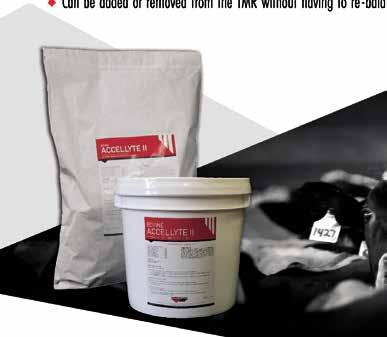
During the annual meeting, farmers got to learn, experience, and taste how their checkoff dollars are reaching consumers in the marketplace today to build demand and trust in dairy. Midwest Dairy is proud to be a farmer-led organization and encourages all dairy farmers to connect with board members from their own states and communities to learn more about their experience with checkoff initiatives.
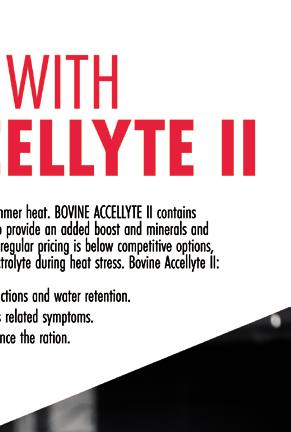

The aging process sometimes has a way of sneaking up on a guy, jumping out and yelling, “Boo!”
For instance, it was shocking the rst time a person who was younger than I called me sir. My initial reaction was, “Who the heck is he talking to?” My second reaction was, “Oh my gosh. Am I that old?”
I clearly recall how, when I was young, certain people were automatically addressed as sir or ma’am. These people were members of the geezer demographic and thus deserved to be denoted as such. In short, calling someone sir or ma’am wasn’t so much a sign of respect as it was a way of saying “Ha, ha. You’re old, and I’m not!”
The aging process has again jumped out and
smacked me right between the eyes. Well, that isn’t exactly the case; it would be more accurate to say it smacked me square in both eyes.
I began to notice, with no small amount of alarm, that things were beginning to appear blurry when I read. This isn’t a problem when I’m using my computer as I can make the fonts so big that everything is absolutely huge, and it looks like the computer is shouting.
But printed materials such as newspapers were a whole other story. You don’t have the option of changing the font size in a physical newspaper. This left me no choice but to read over the tops of my glasses.
What’s the big deal, you might ask. The big deal is that reading over the tops of your glasses simply
screams old geezer. This behavior is usually associated with such veriably old, staunchly strait-laced and unfun people as Supreme Court justices and Mrs. Schultz, my erstwhile high school librarian.
Mrs. Schultz was so stern and severe that a single glance shot over the tops of her glasses had the power to stop a rowdy high school linebacker dead in his tracks with enough force leftover to stun a couple of nearby varsity basketball players. I did not want to begin to look like Mrs. Schultz.
With this thought in mind, I went to see my optometrist to have him take a peek at my peepers. To have my eyeballs eyeballed, so to speak.








 By Jerry Nelson Columnist
By Jerry Nelson Columnist


















My friendly local vision physician examined my eyes then made a strange comment regarding my religious afliation.



“I am a life-long Lutheran,” I replied. “I have never had anything to do with any of the various Protestant churches that are governed by presbyters and are traditionally Calvinist in doctrine.”
“That’s not what I said,” he replied gently. “I said that you have presbyopia, the inability of the eye to focus sharply on nearby objects, resulting from loss of elasticity of the crystalline lens with advancing age.”
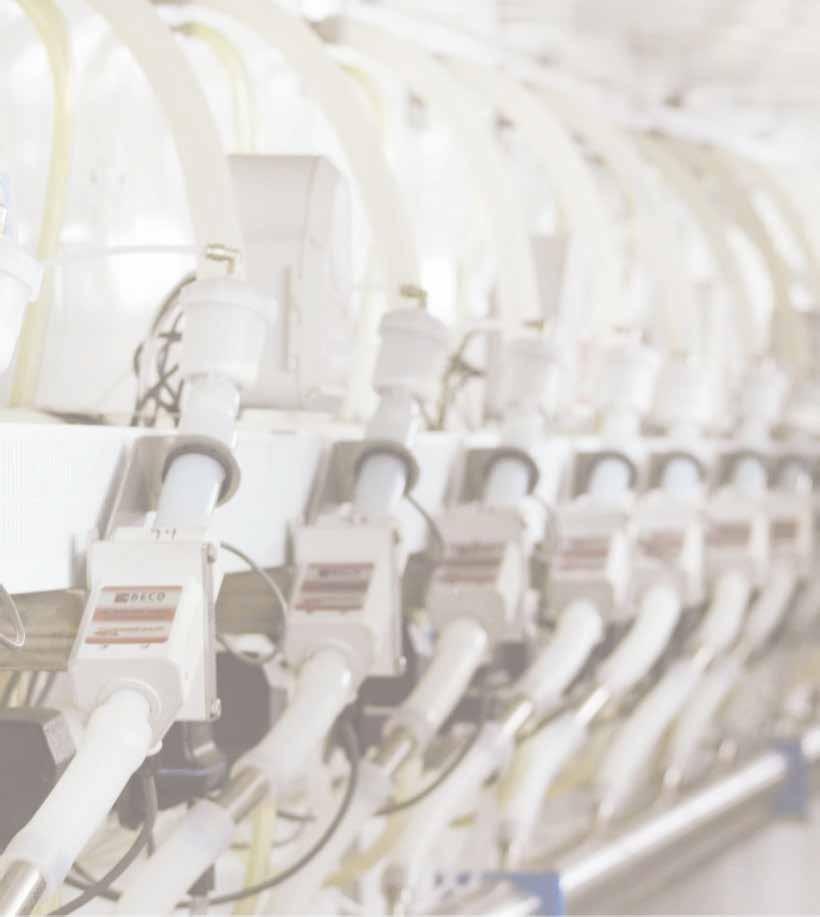
I agree that my memories of this conversation might sound as if they were lifted directly from Wikipedia. This happens to me a lot, especially when I need to look up a word in the midst of writing a column.
But the good doctor had saved the worst for last. Specically, he dropped the dreaded B word. Bifocals! The horrors! I might as well have the words “hopeless old geezer” tattooed across my forehead.
My eye doctor held out hope for salvation in the form of no-line bifocals. I knew they cost extra, but I would pay anything to avoid those decidedly uncool glasses that have those weird halfmoon areas at the bottom of the lenses. Lenses that make it appear you’re wearing chunks of glass that had been polished by an OCD chimpanzee.
I found myself actually looking forward to getting bifocals. Maybe I would be able to see around corners. Perhaps those specs I ordered from a comic book all those years ago would nally arrive and I would have X-ray vision and be able to see through skin and clothes. What fun.
But alas, none of these new superpowers came with my new lenses. The only novel ability I gained came to light when I looked down and swung my head from side to side. Whenever I do that, the ground below me distorts and bends as if it’s being viewed in a funhouse mirror.
Maybe I could use this as an excuse for my congenital klutziness, such as when I walk across the room and trip over a paper clip. But I doubt if I would survive the look my wife would shoot at me from over the tops of her glasses.
Jerry is a recovering dairy farmer from Volga, South Dakota. He and his wife, Julie, have two grown sons and live on the farm where Jerry’s great-grandfather homesteaded over 110 years ago. Jerry works full time for Dairy Star as a staff writer and ad salesman. Feel free to email him at jerry.n@dairystar.com.

A few unseasonably warm days in late April not only melted most of the snow but also reminded us to turn our attention to heat abatement. The effects of heat stress are well documented and costly to the dairy farm as they impact a variety of performance parameters, including milk yield, growth and reproduction.



Temperature humidity index is a metric that combines temperature and relative humidity, and it is commonly used to evaluate risk of heat stress. High-producing dairy cows can become heat stressed at a THI of only 68. If you haven’t already done so, start thinking about heat abatement strategies for your dairy cows.






The rst line of defense against heat stress is to provide shade to animals. Next, the combination of air velocity, water and time are all key factors to effective evaporative cooling of cows.
during summer months. Lactating dairy cows require between 25 and 35 gallons per day. Water intake may double during periods of heat stress. Provide 3 to 4 inches of linear water space per cow along with a minimum of two water locations per group. Check water ow rates during times of high demand and clean waterers regularly. Availability of clean water to cows leaving the parlor is benecial for increasing water intake during heat stress. This can be accomplished with temporary, low-cost waterers.
By Barry Visser NutritionistWork with your management team to prioritize mechanical heat abatement strategies on your farm. Several resources are available to assist in this process. It is imperative that cows feel comfortable enough that they want to go to the feedbunk to eat. Also focus on the areas where heat stress is most severe, such as parlor holding pens. A well-managed cooling system with fans and/or sprinklers will help in these areas.

Providing access to clean, fresh water is critical
Certain dietary strategies can be benecial during heat stress, but the biggest impact will come from focusing on forage quality along with forage and feedbunk management. Minimize the amount of time feed is defaced from bunkers or piles. Provide a majority of the ration during cooler periods of the day to promote greater dry matter intake. Intensity of feed push-up and frequency of feeding can encourage more frequent meals and reduce slug-feeding that naturally occurs during heat stress. If feed stability is an issue, consider adding dry propionic acid to the total mixed ration on hot, humid days.
From a nutrition standpoint, no silver bullet perfectly combats heat stress. Benets can be seen by increasing certain minerals; potassium, sodium and magnesium contribute to an increase in dietary cation-anion difference levels in lactating dairy cows. Potassium is a primary regulator of water secretion from cows’ sweat glands and is secreted at high levels in milk. Research has shown feeding elevated DCAD levels during heat stress has resulted in improved milk yield and milk fat test. Researchproven additives to consider during periods of heat stress include additional buffers, salt, yeast, bypass fat, niacin, Rumensin® and Aspergillus oryzae.
Researchers at the University of Florida recently concluded that minimizing heat stress in dry cows is a valuable management tool to improve performance in the next lactation. Results from three consecutive years concluded that cows heat stressed during the dry period will produce, on average, 13 pounds less milk than cows that are cooled during the dry period. In addition, these studies showed lower immune status and lower calf birthweights from cows exposed to heat stress during the dry period. More re-cent research conrms this reduction in performance in the daughters and granddaughters of heat-stressed cows, making this a multigenerational challenge. Reducing heat stress requires careful consideration of management and nutritional practices. Provide a well-managed cooling system in your dairy barns rst and then look at what feeding strategies and nutritional additives may give you the most economic benets.
Barry Visser is a nutritionist for Vita Plus.





JD 9700 2020, Kernel Processor, PRWD, 1165 hrs., 653 CH hrs., #543646 ......... $503,000
JD 8600 2018, Kernel Processor, PRWD, 1651 hrs., 778 CH hrs., #188792 ......... $342,000
JD 8800 2016, Kernel Processor, PRWD, 2603 hrs., 1679 CH hrs., #175182 ....... $268,100

JD 7550 2009, Kernel Processor, PRWD, 2373 hrs., 1769 CH hrs., #560107 ....... $158,000
JD 8500 2016, Kernel Processor, PRWD, 2232 hrs., 1180 CH hrs., #555984 ....... $259,000
JD 8300 2022, Kernel Processor, PRWD, 33 hrs., #537501 ................................ $459,000




JD 9900 2019, Kernel Processor, PRWD, 1222 hrs., 884 CH hrs., #550177 ......... $493,000
JD 9900 2020, Kernel Processor, PRWD, 844 hrs., 661 CH hrs., #553436 ........... $508,000
JD 9800 2019, Kernel Processor, PRWD, 899 hrs., 661 CH hrs., #550175 ........... $503,000
2018, Kernel Processor, PRWD, 1701 hrs., 1069 CH hrs., #541389 ....... $348,500

Claas 970 2018, Kernel Processor, PRWD, 2257 hrs., 1639 CH hrs., #533174 .... $299,000
JD 8500 2017, Kernel Processor, PRWD, 1460 hrs., 1070 CH hrs., #553938 ....... $299,000
JD 9600 2019, Kernel Processor, PRWD, 1720 hrs., 1130 CH hrs., #553763 ....... $349,900
JD 7500 2005, Kernel Processor, 4568 hrs., 3267 CH hrs., #547004 .................... $74,500
Claas 940 2020, Kernel Processor, PRWD, 650 hrs., 480 CH hrs., #532728 ........ $399,900

JD 9600 2019, Kernel Processor, PRWD, 1224 hr., 811 CH hrs., #532049........... $409,900





JD 7780 2013, Kernel Processor, PRWD, 3370 hrs., 2109 CH hrs., #274502 ....... $169,900
JD 9800 2020, Kernel Processor, PRWD, 1415 hrs., 942 CH hrs., #554135 ......... $459,900
JD 8600 2016, Kernel Processor, PRWD, 1650 hrs., 1200 CH hrs., #555841 ...... $289,000
JD 8800 2017, Kernel Processor, PRWD, 1728 hrs., 904 CH hrs., #544616 ......... $339,900
JD 9700 2020, Kernel Processor, PRWD, 961 hrs., 500 CH hrs., #552460 ........... $524,900
JD 7980 2014, Kernel Processor, PRWD, 3400 hrs., 2366 CH hrs., #532823 ....... $157,000
JD 8700 2016, Kernel Processor, PRWD, 1469 hrs., 933 CH hrs., #532572 ......... $339,000




Sometimes you just have to laugh and heave a heavy sigh as all your best laid plans are kicked to the side by the latest breakdown. The alternative of letting the frustration explode into anger doesn’t do any good. If anything, it may lead to more breakdowns.


This has been an interesting spring season with so many twists and turns. Yet, as we look at the green dotted lines marking a new growing season across the elds, we realize things worked out once again, despite our best laid plans.



Mark always wants to have the corn planter in the ground by the end of April and done by May 10. We count on the spring rains to bring the rst crop hay to harvest height by Memorial Day weekend. Those plans have been tossed out the window very quickly this spring.


As we ipped the calendar to May, very little eldwork was being done. Seed corn was delivered, but the ground was too cold to ll the planter. Snow and frost still had their grip on the land. The delay gave the guys


a bit of extra time to go through the equipment to be ready to hit the ground running when we could nally pull into the elds. Oil and lters were changed. Zerks were greased. Air pressure checked. We were ready to roll, or so we thought.
The only thing starting to grow was the number of breakdowns we didn’t plan on. Four different tractors broke down ve times. The corn planting tractor made two trips to the repair shop on back-to-back days before we even hooked up to the planter. I drove that tractor out to pick rocks when I noticed the yellow warning light blinking. That couldn’t be good. I mentioned it to Mark, and we drove it back to the yard as the temperature of the tractor kept climbing. A quick call to the mechanic determined it was probably just a sensor issue. It turned out to be a different problem in the same area. Two round trips and two bills later, the tractor was back home, ready to start planting.
The breakdowns were only getting started. I ran to St. Cloud for two springs for the planter that broke as


they hit one too many rocks. A bearing on the disk locked up and needed to be replaced. The old farm truck nally decided it was on its last leg. We can’t put the truck in park, so we need to stop on level ground and hope the battery will have enough juice to turn over the engine. I hauled bull calves to the sales barn on a wing and a prayer with the old truck. Thank goodness for a level yard.
The equipment wasn’t the only thing breaking down. Mark had been dealing with something on the ball of his foot all winter long. Finally, he went to the foot doctor to take care of it. The doctor assured Mark it would hurt for a few hours, but he was going to really go after this sore spot. He went after it all right, but it ended up hurting for almost a week. Besides road trips, I was now on call for milking as Mark gimped around the yard. A modern jazz dancer couldn’t even begin to imitate Mark’s body movements as he hobbled around the farm.
By Natalie SchmittI had foot surgery several years back and had bought a kneeler scooter. It was now Mark’s turn to y around the house with this fun mode of transportation. I even left the four-wheeler outside the backdoor so Mark would have an outdoor scooter around the farm yard. That lasted only a day. The electric shift locked, and Mark was back to hobbling around the yard again as the fourwheeler was headed to the shop. Another unscheduled breakdown.

It is a good thing Mark’s favorite job is planting corn. This is the 49th corn crop he has put in the ground. It was also a job he could do while staying off his foot. He could never really gure out a way to keep it elevated in the tractor cab though. Eventually his foot has started to feel better, and he’s not hobbling around the farm yard. He’s going to survive this breakdown.
Not to be left out of the breakdown saga, my milk wagon nally gave out. I was struggling all winter with navigating my wagon around the yard. Luckily, we only had a few calves to feed, but spring was coming and so was a baby boom. I found my coupons for Northern Tool and headed to town to pick up another wagon. I ended up making two trips to the store and opening four boxes of wagons to discover the reason they were on sale was because they were all missing parts. The instructions were also missing a couple of steps.
I found the missing parts at the hardware store and used my old wagon as a working diagram of how to assemble the front end. It is amazing how smoothly a wagon pulls when the bearings work and the tires aren’t at. So far, we have had 10 heifer calves this month and counting. We ended up with three calves in three hours on Mother’s Day. It looks like we won’t be running out of replacement heifers for the herd, but we will run out of room for all of them in the barn.
Despite missing Mark’s planned planting dates, things seemed to have worked out. The delayed start in planting gave the ground time to warm up. Mark thinks this may be the best germination of standing corn he has ever planted.
Breakdowns can be kryptonite to any farmer’s patience during the pressure of spring planting. Despite all your best efforts to maintain and prevent problems, breakdowns happen. How we deal with the delay affects our health and well-being. Sometimes we just need to laugh and heave a heavy sigh as we reassure ourselves that things will work out.
As their four children pursue dairy careers off the family farm, Natalie and Mark are starting a new adventure of milking registered Holsteins just because they like good cows on their farm north of Rice, Minnesota.




“When you are joyous, look deep into your heart and you shall nd it is only that which has given you sorrow that is giving you joy.
“When you are sorrowful, look again in your heart, and you shall see that in truth you are weeping for that which has been your delight.” – Kahlil

No quote is more accurate when it comes to show cows. Showing cows has brought our kids – and all of us, really – much joy and delight but also tremendous heartbreak and sorrow.
We experienced a rollercoaster of all the emotions when Dan’s beloved Milking Shorthorn cow, Glitzy, calved last month.

family celebrates Christmas there, and our kids attend their summer camps. We even had our children baptized there.

Vern went on to explain that the retreat organizers wanted the participants to learn how to milk a cow.
We’ve had lots of interesting requests to teach cow milking over the years; our students include some famous food bloggers, a senator, and a physician from Nigeria. This was the rst time we’ve been asked to teach cow milking on location.

Of course, I agreed. One of my favorite parts of dairy farming is helping others better understand cows and dairy farms.

“Really?” was Vern’s incredulous reply. I think he thought we’d nd the request too crazy. And, truly, if our kids didn’t show cows, it might have been.




 By Sadie Frericks Columnist
By Sadie Frericks Columnist


To start, Glitzy was overdue, so we were all disappointingly convinced she’d have another bull calf. But, she proved us wrong when Glen helped her deliver a big, beautiful heifer calf. And, by beautiful, I mean gorgeous, with the best Milking Shorthorn markings.
Everyone’s excitement reached peak levels within minutes, thanks to the instant communication text messaging allows. Ideas for naming her were exchanged. Arguments about who was going to show her ensued. Fresh out of the state FFA dairy judging contest, Dan said it was the best day of the month.
But something was wrong. Glitzy’s beautiful baby didn’t have a suckle reex – even after 24 hours. We tried every trick we could think of to get her started. By the time Dan returned from the FFA convention, I was worried; I warned him it didn’t look good.


Glitzy’s calf couldn’t stand on her own either. She held a recumbent position just ne and looked perfectly normal except for labored breathing. I called the vet; he said we’d already done everything he’d recommend. We suspect she had a heart defect or some other congenital abnormality.
Losing her was heartbreaking.
With the sorrows come the joys. One of Monika’s show cows made a delightful experience possible last week.
It started with a phone call from Glen’s dad, Vern. Vern wanted to know if we’d be willing to bring a cow to camp for a young adult retreat.



Vern has worked at Camp Lebanon, a nearby Bible camp, since shortly after retiring from dairy farming. In that time, Camp Lebanon has become a special place for our entire family. Glen’s


I knew immediately which cow would go to camp: Sunlight.
Sunlight is a 6-year-old Jersey who has been on the halter since she was a March calf. Monika showed her for ve consecutive years at our county fair. Sunlight missed last year’s fair due to an untimely pregnancy loss but might return this year. She truly loves people and affection. She also never so much as shifts her weight during milking.
Monika was ecstatic when I shared the news we’d be bringing Sunlight to Camp Lebanon. She said it was the most unexpected combination of two of her favorite things. She beamed a megawatt smile the whole way to camp.
Without electricity and a vacuum pump, we couldn’t exactly show the retreat participants how we milk our cows. But we did show them how to strip milk from a teat and let them all try.
We also answered their amazing questions. We talked about everything from A.I. to homogenization to the economics of the dairy industry.
For all of the opportunities I’ve had to explain dairy farming to others, this was my rst time interacting with a group of young adults. This is denitely a demographic we should be having conversations with more often – either by bringing them to our farms or by bringing cows to them.
Through it all, Sunlight was perfect. She stood calmly while people pet her, posed for pictures, and showed incredible patience while everyone tried milking her. In between sessions, she did a little lawn mowing.
Monika beamed the whole way home.
Joyful experiences like taking Sunlight to camp make the painful moments bearable. And, all in all, I’d say our kids’ joys have outnumbered their heartbreaks.
Sadie and her husband, Glen, milk 100 cows near Melrose, Minnesota. They have three children – Dan, Monika, and Daphne. Sadie also writes a blog at www. dairygoodlife.com. She can be reached at sadiefrericks@gmail.com.










